
The Story Behind Plaques of Dublin and Commemoration Signs
- Wed, 8 Apr 2015
The poet Patrick Kavanagh once wrote of a “footfall tapping secrecies of stone” and as I walk around Dublin that phrase often rings true.
If the paving stones of our footpaths and the bricks of our buildings could talk to us about the lives once lived in our city they would have quite the story to tell. The thing is that on occasions the walls and pavements of our fair city do talk to use. Though you may pass them by with scant regard the streets and buildings of DublinTown are filled with a vast array of stories from the past in the form of the various plaques and commemorations that adorn bricks, flagstones and pillars. Below are a couple of our personal choices that may have bypassed your attention.

Pawel Edmund Strzelecki – plaque located at the side of Clery’s on Sackville Place
Pawel Edmund Strzelecki was born in 1797 in what is now part of the modern city of Poznan, Poland. A soldier, and an early European explorer through much of Australia, Pawel’s association with Ireland began during the Great Famine when he was sent to Dublin to help distribute supplies donated to relieve the chronic hunger gripping the worst affected areas of the country. Such was his devotion that he even succumbed to “famine fever”, a horribly debilitating illness that was believed to have been spread by lice. Due to his previous connections with Australia he was also well placed to help those Irish families who wished to emigrate there to start new lives.

Lafcadio Hearn and Dion Boucicault – plaque located at 47 & 48 Gardiner Street Lower
Patrick Lafcadio Hearn was born on June 27, 1850, on Lefkada, an Ionian island. The son of a Greek mother and an Irish army surgeon who parted ways shortly after his birth, Hearn was sent to live with relatives in Ireland, specifically 47 Gardiner Street Lower which is now the Townhouse hotel.
His upbringing left him with an unshakeable interest in ghost stories and the occult. He spent time living in Cincinnati and later New Orleans not long after the end of the American Civil War. Later in life he moved to Japan where he ended up teaching English in Tokyo Imperial University. It was his writings during his time in Japan that would secure his cultural legacy, especially his celebrated writings on Japanese folklore and ghost stories which have been made into feature films and manga cartoons.
The neighbouring building was home to Dion Boucicault another writer of note, Boucicault was born in Dublin in 1820 and was a man of many talents. He was an actor, theatre manager and playwright. He helped to define the role of the “stage – Irishman”, while his work tackled risqué subjects for the time such as mixed-race marriage. His writings, often combining Victorian melodrama with farcical comedy remains popular and the Abbey Theatre produced Boucicault’s Arrah na pogue as recently as 2011.

Richard Brinsley Sheridan, Thomas Moore, Robert Emmet, The Duke of Wellington – plaque located on Bewley’s of Grafton Street
Grafton Street is the busiest street in the county, and Bewley’s café (currently under refurbishment) is one of its most popular businesses, but many people walk by this impressive plaque without noticing it. Bewley’s was the site where the famous Whytes Academy was established, an English Grammar School, and among its famous students included writers, composers, rebels and politicians. Some famous past pupils were Richard Brinsley Sheridan, one of the foremost playwrights of the day, famous for plays like The Rivals and School for Scandal he was also an MP for over 30 years and is buried in the Poet’s Corner of Westminster Cathedral.
Thomas Moore, born in nearby Aungier Street who is best remembered as one of the most popular songwriters of the 19th Century, his notable works including The Last Rose of Summer, the Minstrel Boy and aptly The Meeting of the Waters as his statue resides over a former public toilet! His works are referenced extensively in the writings of James Joyce and he has a statue next to Trinity College where he was a student, (the statue has been temporarily relocated for the Luas works) and the Westin Hotel.
Robert Emmet the nationalist leader was executed in 1803 at the tender age of 25 on Thomas Street in the city centre. He had been involved in the 1798 rebellion as well as being the leader of the failed revolt that took place in 1803 and which lead to his arrest and death. He remains a hugely significant figure in Irish Republican history, was the subject of songs and poems, as well as a fairly inaccurate play by Dion Boucicault (mentioned above), and has several towns and counties named after him in the United States.
Arthur Wellesley, better known as the conqueror of Napoleon, a two-time British Prime minister and the 1st Duke of Wellington was born in Dublin where the Merrion Hotel now stands. As well as his famous victory at the Battle of Waterloo which is commemorated by the imposing Wellington monument in the Phoenix Park (the monuments’ metal plaques are sculpted out of captured Napoleonic cannon), the Iron Duke during one of his terms as Prime minister brought the Catholic Relief act of 1829 into force which gave Catholics almost full Civil Rights under British law and meant that Members of Parliament like Daniel O’Connell could finally, officially take their seats in Westminster.
Quite the collection of old boys from Samuel Whyte’s Grammar school, give them a thought next time you stop into Bewley’s for a coffee.

Tom Clarke – plaque location at the corner of Parnell Street and O’Connell Street Upper
Thomas Clarke has two plaques which bear his name, both above the tobacconist shop he ran on the corner of Parnell Street and O’Connell Street. As well as selling cigarettes, sweets and other sundry items he also used his business as a meeting place for other members of the IRB. British forces were well aware of Clarke’s Republican past, including his earlier attempt to blow up London Bridge and would often keep the shop under surveillance!
Clarke fought during the Easter Rising in the GPO garrison, only a stone’s throw from his shop. As one of the seven signatories of the proclamation he was sentenced to death and despite possessing American citizenship (which would save Eamon De Valera’s life) he was executed by firing squad on May 3rd 1916. His wife Kathleen would continue on with his political ideals as a TD and Senator and also as the first female Lord Mayor of Dublin. A newsagents shop still trades to this day from the same spot as Clarke’s original tobacconists.

Ernest Walton – plaque location Trinity College
In Ireland many of us would be aware of the contributions of our Nobel laureates in the field of literature, Heaney, Beckett, Shaw and Yeats are well known and oft-quoted. They have featured on banknotes and stamps and in TV documentaries, their faces look out on us from displays in Dublin airport next to quotes from their famous works.
Less in known of Ernest Walton, a scientist and lecturer in Trinity College who won the Nobel Prize for Physics in 1951 and who helped bring about the “atomic age”. Ireland has a rich scientific history which includes contributions of note from the likes of Robert Boyle and William Rowan Hamilton to the wonderfully named Robert Mallet, the father of seismology.
Walton, who had been a student of fellow Nobel laureate Ernest Rutherford, along with his colleague John Cockcroft were among the first people to effectively “split the atom” and were responsible for the development of an early type of particle accelerator. His plaque is tucked down the back of Trinity College on the School of Physics building.
Related Stories & Guides

BodyByrne Dishes at Balfes
15 August, 2023

The Irish Heart Foundation has launched ‘Her Heart Matters’ campaign
07 September, 2022
Sign Up for our Newsletter
Join now and be the first to know about any new businesses in town, special offers and recommendations on where to go for great food, drink, and shopping experiences in DublinTown.
Category : Round plaques in Dublin
Subcategories.
This category has the following 2 subcategories, out of 2 total.
- Dublin City Council Commemorative Plaques (9 C, 61 F)
- Dublin Tourism plaques (4 C, 10 F)
Media in category "Round plaques in Dublin"
The following 42 files are in this category, out of 42 total.

- Plaques in Dublin
- Round plaques in Ireland
Navigation menu
- International edition
- Australia edition
- Europe edition
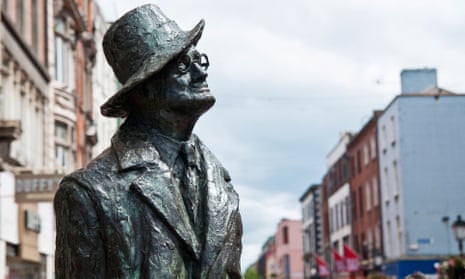
In the footsteps of giants: the ultimate Ulysses walk around Dublin
On the centennial of James Joyce’s modernist masterpiece, we offer a pilgrimage you can fit into a single day
Today marks the 100th anniversary of the publication of Ulysses, by Paris bookshop Shakespeare and Company. It’s also James Joyce’s birthday; he was born on 2 February 1882 – 140 years ago.
Ulysses is contemporary with the Irish Free State, established on 6 December 1922; historians love to pore over its dense, riddling text for clues about the national psyche at the time. The novel and the year have come to be seen as key turning points in Modernism; TS Eliot, whose The Waste Land appeared in December 1922, called Ulysses “a book to which we are all indebted, and from which none of us can escape”.
Joyce signed off his text with the words, “Trieste-Zurich-Paris, 1914-1921”. But it is to Dublin we best go if we want to celebrate Ulysses, which put the Irish capital on the map of premier cities of the imagination – beside the likes of Paris and London – and offered readers a detailed plan of the Irish capital in its perambulating plot, which unfolds over a single day.
Since 1929, Joyce fans have celebrated Bloomsday on 16 June – the fictional date on which the novel’s events take place, in 1904 – with readings, talks, breakfasts, singing, jigs, reels and fancy dress. In 2020 and 2021, the event, forced to go virtual, was dubbed Zoomsday . This year there will no doubt be a bigger than usual Bloomsday – new films and radio productions are already in train and a themed film festival ( bloomsdayfestival.ie ) returns for a third time – but there’s also a lot happening in the build-up.
There are many ways of taking a Joycean tour around the city. Close readers who like a challenge and a wander set off to trace the book’s clues, shadowing the route taken by protagonist Leopold Bloom, despite the fact many buildings and even entire streets have been demolished. Others follow actual maps prepared by others, tag along behind seasoned tour guides or take bus and bike tours. Some have even taken up Bloom’s challenge: “Good puzzle would be cross Dublin without passing a pub”.
There are 14 brass plaques – laid in the pavement in 1988 – marking out the walk taken by Bloom during the course of the novel; there’s a geocache linked to these. But the other central character, Stephen Dedalus – Joyce’s alter ego – also spends much of the book walking, and the suggested stops below contain some of his route.
The Martello Tower, Sandycove
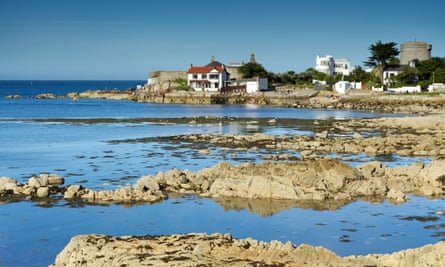
Ireland’s 50 or so Martello towers, likely named after a tower at Cape Martella in Corsica, were built by the British during the Napoleonic wars. This tower, now a Joyce museum , appears on the first page of Ulysses, with Buck Mulligan having a wet shave while testing his banter on Stephen. The opening lines of the novel are repeated over and over in the film Opening Ulysses , created by Ireland’s Department of Foreign Affairs and Museum of Literature Ireland in collaboration with 40 Irish embassies and consulates – a project that perhaps acknowledges many readers don’t get much further than the enigmatic opening.
Sandymount strand

“Am I walking into eternity along Sandymount strand?” wonders Stephen in one of the early stream-of-consciousness sections. Later the same day, Bloom masturbates from the prom while ogling young Gerty MacDowell. This long, broad beach is a place to clear your head before plunging into the labyrinthine novel/city.
James Joyce Centre
In the early 1900s this fine Georgian townhouse at 35 North Great George’s Street gave home to a dance academy run by Prof Denis J Maginni, a character who turns up a few times in Ulysses. The building was saved from the wrecking ball by a Joyce scholar. Leopold Bloom’s fictional house at 7 Eccles Street wasn’t so lucky, but the front door of the property is on display here. Due to Covid-19, the centre is currently closed; reopening date tbc.
No need to choose too carefully; Ulysses allows plenty of scope for “arsing around from one pub to another”. None of the pubs mentioned in the novel looks anything like they would have done back in the day. Davy Byrnes , which Leopold Bloom deems a “moral pub”, is OK for a pint, though the menu doesn’t feature the gorgonzola sandwich he enjoys with a “good glass of burgundy”. Kennedys on Westland Row, formerly Conways, has hosted Bloomsdays, and claims associations with Oscar Wilde and Samuel Beckett, as well as Joyce. The Oval feels kind of time-honoured and lived-in – though the original was destroyed in the 1916 Easter Rising .
O’Connell Bridge
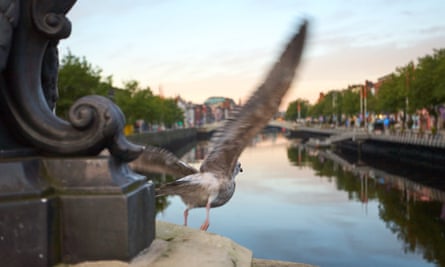
This famous bridge over the River Liffey – built between 1791 and 1794 as Carlisle Bridge and renamed in 1882 after Irish political leader Daniel O’Connell – has a starring role in The Dead, the long, final story in Joyce’s Dubliners. The character Gabriel has an epiphany here, realising he must embrace his country’s quest for independence. In Ulysses, Bloom pauses on the bridge to feed seagulls Banbury cakes (currant-filled pastries similar to Eccles cakes).
National Library of Ireland

This classical building on Kildare Street, designed by Cork-born Thomas Newenham Deane, dates from 1877. In the Scylla and Charybdis episode, Stephen – who has just given some scholars a lecture on his “biographical” theory about Shakespeare’s Hamlet – and Bloom almost meet in the library entrance. The coffered ceiling of the main reading room, stained glass, reliefs and mosaic floor are worth a look.
Museum of Literature Ireland

Branded MoLI for 2022 in homage to Molly Bloom, Joyce’s heroine in Ulysses, and recently reopened to the public, the museum is hosting Love, Says Bloom (2 Feb-3 Jul), an exhibition curated by Nuala O’Connor dedicated to Joyce’s relationship with his wife, Nora Barnacle, their children, Lucia and Giorgio, and grandson Stephen. Until June 2022, the museum is also hosting Suzanne Freeman’s Ulysses, a Treasure Hunt: the episodes of the novel are depicted in a series of small wooden cases dotted around the museum. Copy No. 1 of Ulysses is kept here. Full details of all events can be found at ulysses100.ie .
Booksupstairs
You can’t pay homage to Joyce without popping into a bookseller’s; this independent bookshop at 17 D’Olier Street has itself gone walkabout since opening in 1978, passing from a site above a furrier’s on South King Street, George’s Street Market Arcade and 36 College Green – opposite Trinity College – before settling here. The shop stocks new and secondhand editions of Joyce’s works and has a cafe. Consuming Joyce (Bloomsbury), a new book by John McCourt, analyses, among other things, why we go on pilgrimages instead of reading James Joyce.
Glasnevin cemetery
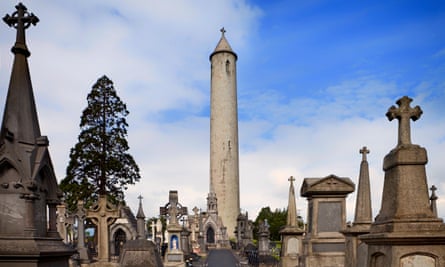
Death is a key motif in Ulysses. Stephen is mourning his mother’s passing. Bloom is on the way to Paddy Dignam’s funeral at this large cemetery north west of the city centre. The tomb of drowning victim Matthew F Kane says he was the “model for Patrick Dignam” and four other people in the novel. While Joyce was writing Ulysses, the great influenza pandemic of 1918-1920 was slaying millions. In the Hades episode of the novel, Bloom muses: “Whooping cough … Only measles … Scarlatina, influenza epidemics. Canvassing for death. Don’t miss this chance”. Thinking as an advertising agent, he imagines the rival plagues as travelling salesmen, bidding for business (ie bodies).
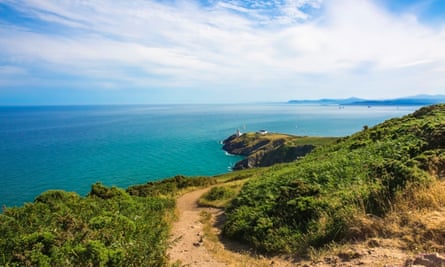
This beautiful peninsula to the north east of Dublin has special significance in Ulysses. Bloom proposed to Molly here. Howth is also a prompt in Molly’s final soliloquy, when she recalls why she loves him (“yes he said I was a flower of the mountain yes”). Dublin is where Bloom is forced to confront the fact he is a cuckold. For hope and faith, you have to leave the metropolis behind, go to the edge, study the sea.
- Dublin holidays
- Ireland holidays
- Cultural trips
- James Joyce
- City breaks
Most viewed
- Click to open search
- Open the main navigation
- Newsletter Opens in a new window
15 quirky and unique things to do in Dublin
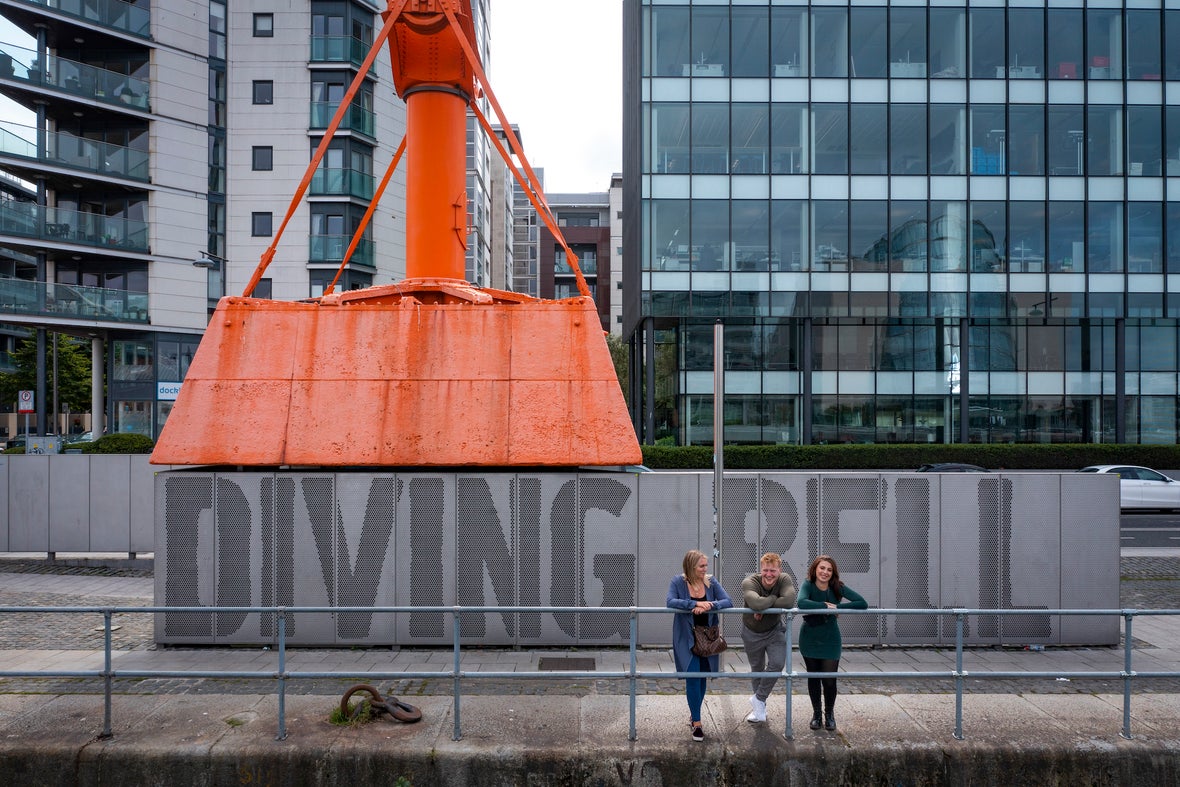
There’s never a shortage of things to see or visit in Dublin, from historic churches to fascinating museums.
But it’s also home to many unusual or hidden locations, and experiences which are a twist on your usual fare. These secret cafés, spooky crypts and remarkable historical objects can turn a city trip from great to unforgettable.
So, if you want to experience the more unusual side of Dublin on your visit, check out our favourite quirky highlights in the capital.
- 1 . The Diving Bell
- 2 . The Hungry Tree
- 3 . Ye Olde Hurdy-Gurdy Museum of Vintage Radio
- 4 . Fr Pat Noise's plaque
- 5 . The Church Bar
- 6 . MV Cill Airne Boat
- 7 . Mummies at St Michan's
- 8 . Mary's Bar and Hardware Shop
- 9 . Skyview Tower Dublin
- 10 . Napoleon Bonaparte's toothbrush
- 11 . Four Provinces pub and brewery
- 12 . St Patrick's footprint
- 13 . The Lucky Stone at St Audoen's Church
- 14 . Druid's Judgment Chair
- 15 . The Cake Café
The Diving Bell
The incredible Diving Bell on Grand Canal Dock is a fascinating remnant of Dublin Port’s history. Designed by port engineer Bindon Blood Stoney (what a name!), it was used from 1871 during the construction of the quay walls and only went out of use in 1958. The huge orange contraption enabled people to work under water, though the conditions inside were said to be pretty uncomfortable. In the bell’s interpretative centre, you can learn more about the dock workers who did the difficult and essential work inside it. Afterwards, why not stop off at Bindon Blood Stoney Road around the corner and tip your hat to the wiley inventor.
The Hungry Tree
A walk to the gorgeous Phoenix Park is a must-do when you visit Dublin’s northside, but on the way there’s a quirky spot and great photo opportunity to factor into your wander. Inside the King’s Inns grounds at Constitution Hill you’ll find the Hungry Tree. This stunning London plane tree (listed as one of the country’s Heritage Trees by the Tree Council of Ireland) was given its name as it’s been chomping away on a park bench over the decades. On the walk to Phoenix Park, take a detour to Constitution Hill and ask a friendly local for directions. Keep an eye out for the wrought iron gates at the entrance to King’s Inns – and then get your best smile ready for the camera.
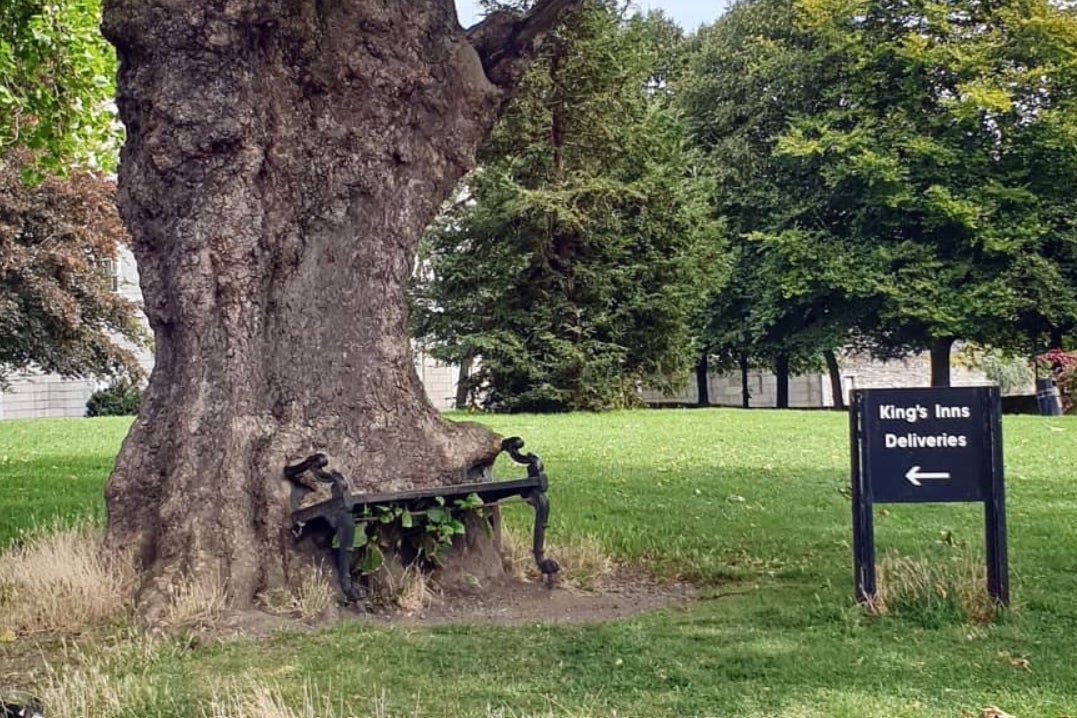
Ye Olde Hurdy-Gurdy Museum of Vintage Radio
Dublin has almost 30 Martello Towers dotted along the coast, built as lookouts in the very early 1800s ahead of an expected Napoleonic invasion. In the #2 tower on Howth’s East Pier, one man’s passion has seen the building turned into the quirky Ye Olde Hurdy-Gurdy Museum of Vintage Radio . Inside is the collection of audiophile Pat Herbert, who began collecting radios and all things connected with communications in the 1950s, like gramophones, crystal sets, valve radios and even early Morse equipment, as well as early TVs, music boxes, photos and telegrams. Step inside this portal to the past and learn about how the tower was the site of the first successful ‘wireless’ transmissions between Howth and Holyhead (carried out by American Lee DeForest in 1903), as well as its links to the inventor Guglielmo Marconi.
Fr Pat Noise's plaque
History fans will often take note of the various plaques around capital cities, but this one on Dublin’s O’Connell Bridge has quite the bizarre backstory. It looks like an ordinary plaque, celebrating a Fr Pat Noise who died “under suspicious circumstances when his carriage plunged into the Liffey on August 10th, 1919”. The plaque was installed in 2004, but it wasn’t until 2006 that a journalist called attention to it – and it was discovered it was a hoax. Even though the plaque was removed once, it was reinstalled by the two brothers who created it, and is still on O’Connell Bridge to this day.

The Church Bar
Sure, Dublin is home to many pubs and churches. But how about a location that combines both? The Church is a café, late bar and restaurant on Jervis Street, ideal for if you need a break after checking out the shops nearby on Henry St. The 17th century building hasn’t been used as a church since the 1960s and was later converted into a contemporary venue which opened in 2005. Eat lunch beneath stained-glass windows and near original wall tablets, spot an original organ built by Renatus Harris, and view the bust of Arthur Guinness, who was married in the church in 1761. You can also visit the burial crypts in the building.
Settle in for some casual lunch or dinner between 12pm to 9pm – and if the weather is warm, the terrace is a great spot for people-watching.
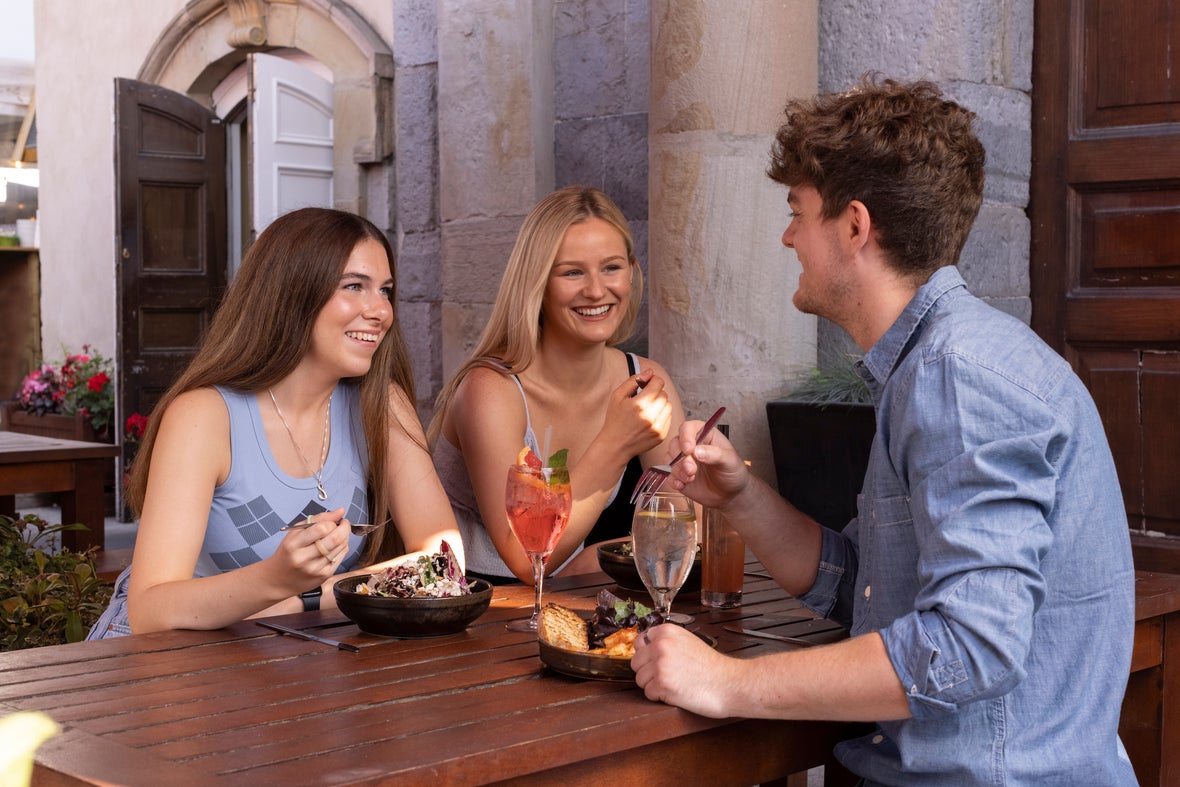
MV Cill Airne Boat
Dublin’s MV Cill Airne Boat , located at Quay 16, North Wall Quay, is a lovely spot to oversee the Docklands and grab some dinner with a maritime twist. The boat was built in the 1960s and was later fully restored after going out of use in 2003. Depending on the sort of meal you’d like, you can choose from the Captain’s table in Quay 16 Restaurant, the Blue River Bistro Bar on the upper deck, or have a casual drink in the White Bar on the main deck. No matter the season, you’ll feel like you’re away from the city buzz in this unique setting.
Mummies at St Michan's
If you’re of a spooky persuasion, then the crypt at St Michan’s Church is the stuff of dreams. This church has a fascinating history dating back to 1095 and is home to an organ on which Handel is said to have practiced his Messiah. But it’s below the church you’ll want to venture, to the five long burial vaults containing mummified remains said to belong to some of Dublin's most influential 17th to 19th century families. You'll also find the death mask of Wolfe Tone and the remains of the Sheares brothers who took part in the 1798 rebellion.
There are different theories as to why the remains in the coffins became mummified, with most putting it down to the limestone walls. Whatever the reason, it means that as the coffins disintegrate, the bodies become more visible. (If this is all a bit grim for you, a stiff drink can be had afterwards in the nearby Jameson Distillery Bow St. )

Mary's Bar and Hardware Shop
You could spend an entire Dublin break visiting the city's wealth of iconic and historic pubs – but this is one of the quirkier offerings. Mary’s Bar looks like an ordinary pub, but it doubles as a hardware store. You’ll feel very smug being tucked away from the busy shops on Grafton St while enjoying a drink. Plus, if you’ve some lingering DIY issues that need sorting, you can pick up everything from sandpaper to trowels to hard hats. The site was formerly the Wicklow Hotel, a regular meeting point for Michael Collins and members of the Irish Republican Brotherhood.
Skyview Tower Dublin
Smithfield is home to the Light House Cinema , Proper Order’s amazing coffee and pastries, excellent pubs and a plethora of cafés. But from Smithfield Square plaza, there's also a way of getting an amazing view of the entire city. The Skyview Tower used to be part of the nearby Jameson Distillery, and dates back to 1895. Today, you can get a 360-degree view of the capital from this former air traffic control tower. To get in (it’s open seven days a week) you’ll need to buy tickets from the Generator Hostel . Wear your walking shoes, as you’ll climb a 259-step spiral steel staircase to reach the top.
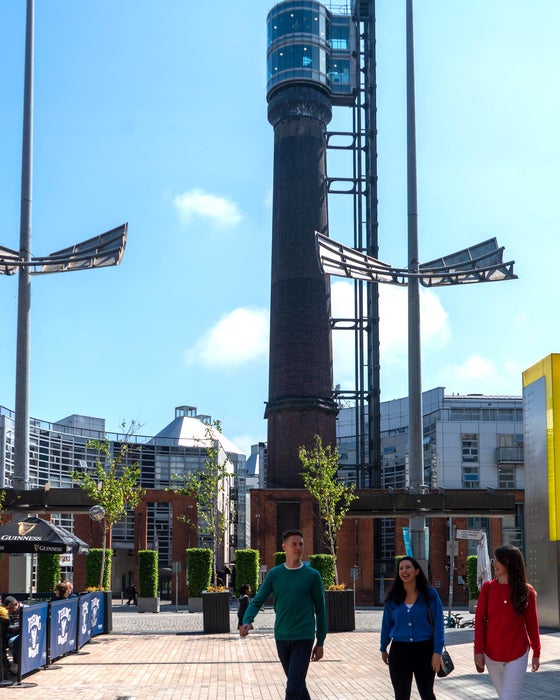
Napoleon Bonaparte's toothbrush
You may not associate the legendary French emperor Napoleon with Dublin, but the man had a small connection with Ireland you can visit today. The Heritage Centre at the Royal College of Physicians of Ireland (RCPI) is home to Napoleon’s toothbrush (yes, seriously). While exiled on the island of St Helena, Napoleon was cared for by the Irish physician Dr Barry O’Meara. Later, he gifted the doctor his toothbrush – which has a gilt handle stamped with an ‘N’ – while on his deathbed. Find the heritage centre in the city, on Kildare St.
Four Provinces pub and brewery
If you’re a big craft beer fan, you can get a behind-the-scenes look at the brewing process at the Four Provinces pub in Kimmage. Hidden in the back of the bar is their on-site brewery, where you can take a tour , test out a few cúpla focal with their bilingual staff, enjoy trad music (from Wednesday to Sunday) and imbibe their brews.
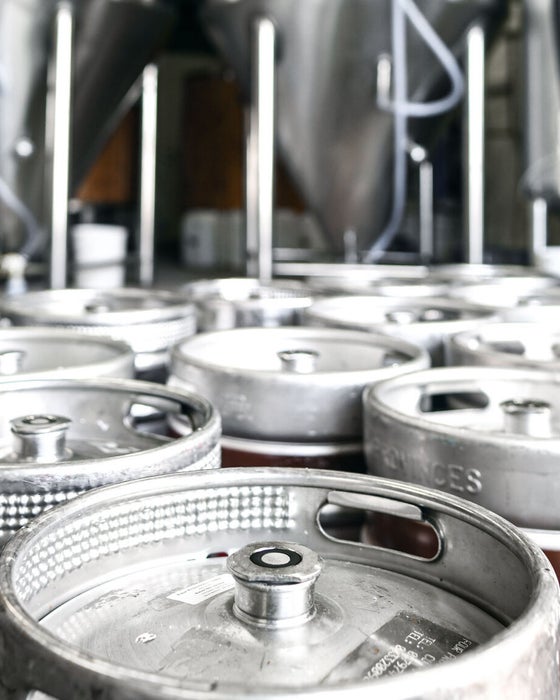
St Patrick's footprint
Poor St Patrick didn’t have the easiest life, though he left quite an impression on Ireland. After being brought here as a youth by pirates in the 5th century, he eventually made a bid for escape. When he returned to Ireland it was as a missionary, and he built a church on an island near Skerries . Skerries is well suited to a day trip on the Dublin Coastal Trail , and while you’re there you can find something intriguing at its headland Red Island (a former island): what legend says is a footprint left by St Patrick.
The story goes that after his precious goat was stolen by Skerries locals, St Patrick left his home on Red Island to rescue it. He took two big strides, leaving a large footprint behind. Sadly for St Patrick, the goat had already been eaten for dinner. Today, you can see the footprint he reputedly left, and some say you can make a wish by placing your hand into the water that’s pooled inside.
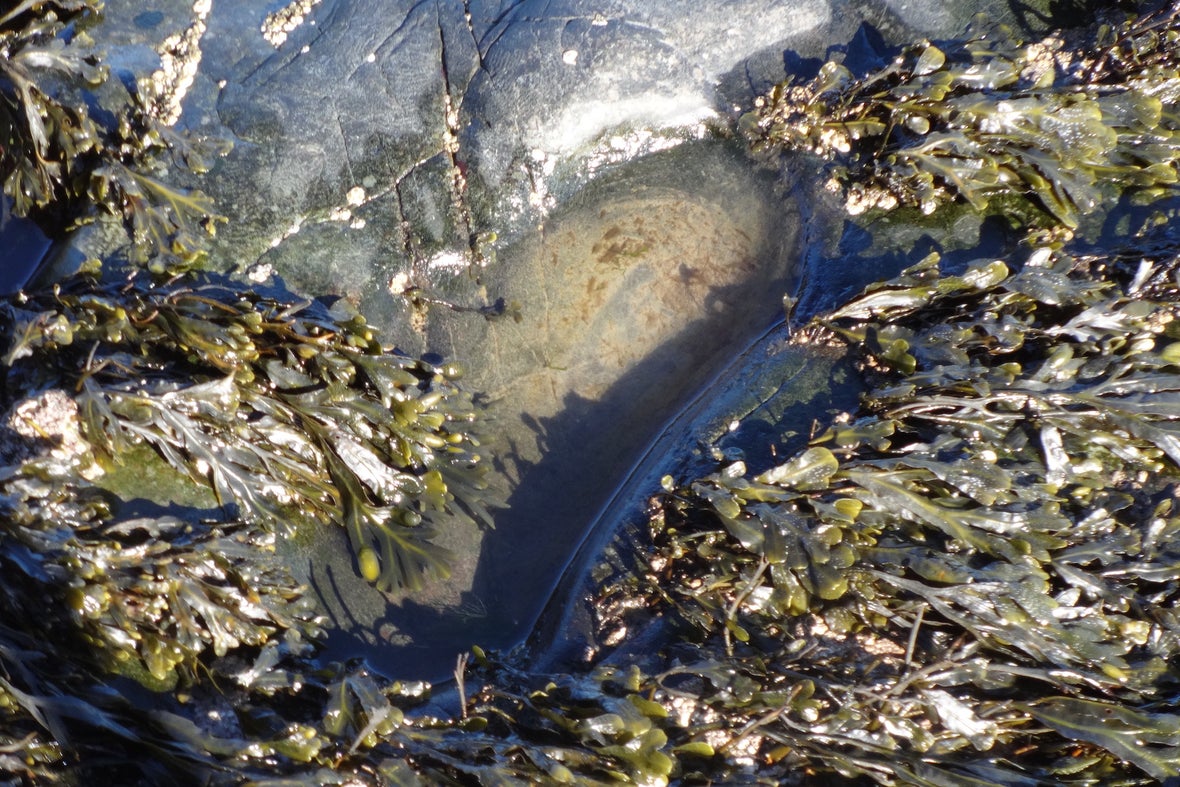
The Lucky Stone at St Audoen's Church
The gorgeous medieval St Audoen’s Church , which dates back to the 12th century, is worth a visit as it is. But inside is a mysterious slab of granite called the 'Lucky Stone', engraved with a Greek cross. The stone dates to the 8th or 9th century and is thought to once have been a tombstone. Because of its alleged lucky properties, in 1309 the Mayor of Dublin donated a water fountain to the people of the city and put the stone against it – possibly to protect them from the notoriously unclean water of the era.
The stone has been stolen multiple times, but on each attempt, something strange happened – like in 1826, when a group of thieves found it got heavier and heavier, forcing them to eventually abandon it. Today, you’ll find the stone just inside the church door – and it might bring you good luck on your visit.

Druid's Judgment Chair
There are many special things to see on a walk in Killiney Hill on the Dublin Coastal Trail . While you’re in the area, take a short detour to a copse near Killiney Heath and find the seat of an ancient druid. Well, sort of. This special monument is made up of three slabs that were originally believed to be part of a series of Bronze Age cairns, or burial chambers, and it’s thought they were later joined together as part of a Victorian folly. Though they might be in an unusual location, once you step into the copse the area feels hidden away and timeless – some say it has a particularly spiritual feeling, too.
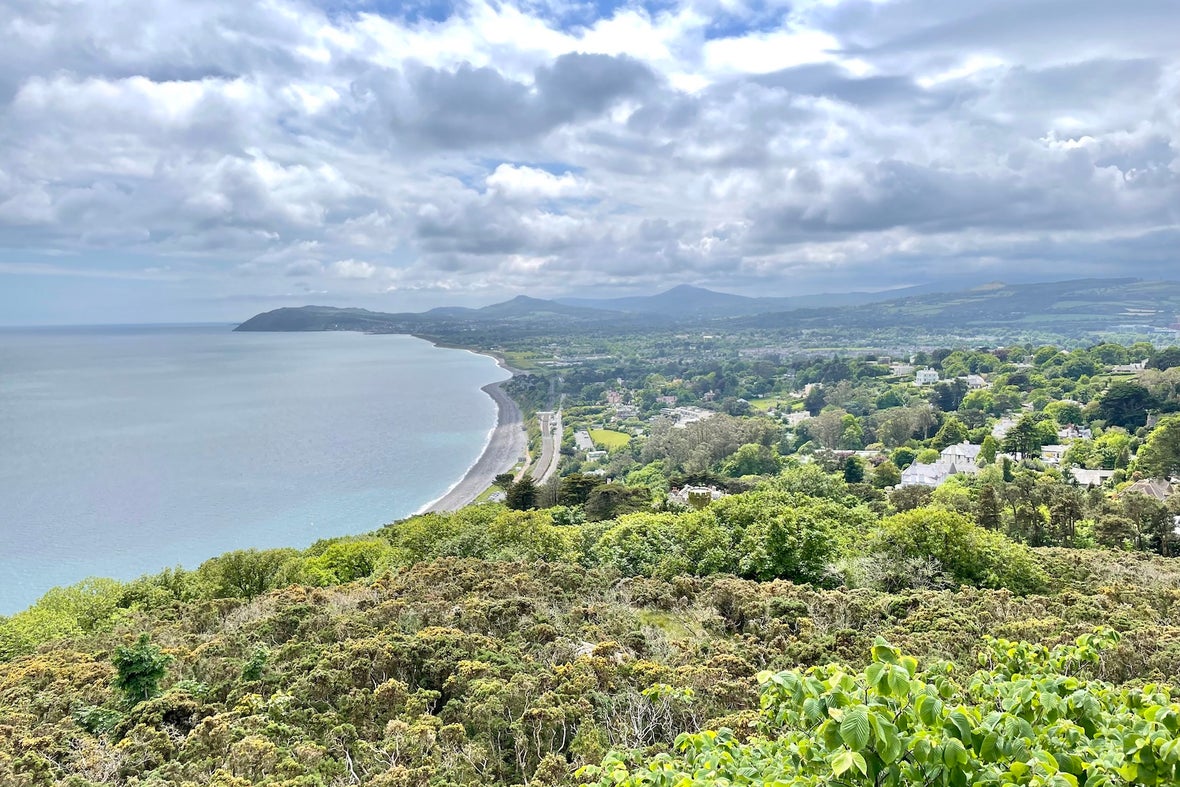
The Cake Café
Sometimes the best things take the most work to find. For years, The Cake Café has been one of Dublin’s best little secrets. To access it, you need to go through The Last Bookshop on Camden Street, which itself is a great place to browse if you want to pick up an unusual or rare book. Inside the café you’ll find pillowy, sugar-dusted cakes, great coffee, hearty sandwiches and a lovely bright oasis where you can recharge before heading back into the busy city.
Plan your Dublin city break
If offbeat escapades are your thing, discover more things to see and do in Dublin.

Are you sure you want to sure you want to leave the feed?
Oops... something went wrong!
Looking for inspiration? Planning a trip? Or just want to scroll yourself happy? We'll show you an Ireland that's tailor-made for you.
- #Landscapes
- #CultureandHeritage
- #OutdoorActivities

Oops, no internet connection
While offline, you can still add items to ‘My Board’. New travel reccomendations will only show up once you’re back online.
See what Ireland has in store for you
Items without a physical location are not shown in map view.
Looks like your board is empty
Look out for the little heart icon around Ireland.com, simply tap the icon to start adding items to your board!

Board settings
Collection cover image.
Visible to people you share your board with
Share Board
Share a link to your ‘My Ireland’ board and inspire friends, co-travellers and family. Only you can add or remove items from your board.

Forgot your password?
Create an account.
Access My Ireland across all of your devices by logging in.
Sign up Not got an account?
Terms of use | Privacy policy
Login Got an account?
Location access
- View offers and deals nearby you
- Get travel inspiration based on your location
- Local weather warnings and useful travel information
Enable location access
Location access on ios.
- 1 Open the website settings for this website in your browser
- 2 Select Location settings
- 3 Choose “Allow
- 1 Open the My Ireland website

- 2 Select the Icon below

- 3 Select “Website Settings

- 4 Change “Location” to “Allow”

Notifications
Travel times.
Tell us when you are going to be travelling Ireland, and we will show you tailored recommendations for the duration of your trip.

- Tips for events happening during your stay
- Helpful travel reminders and updates
You have unsaved changes. Save before leaving?
We take your privacy very serious and only ever process your data with your persmission. If possible this is handled anonymously and we will never store your data for longer than is required. For more information on how we handle your personal data please read our Privacy Policy.
Remove Data
To securely remove all data associated with your profile please contact our Data Protection Officer.
Reset your Board
This will remove all the items you have previously liked from your board. Please note, you can’t undo this action.
Are you sure you want to reset your board?
This will completely reset your board and all associated data permanently. This cannot be undone.
- Created date 19 July 2023
Delete account
Sorry you’re leaving. But you gotta do what you gotta do. Just a reminder, if you delete your account, you won’t be able to post in Community. And it’s permanent so you can’t “undo” it in the future.

Dublin city: 9 literary attractions
Discover Dublin's literary heritage with these 9 attractions.
Dublin city’s literary attractions
Here are 9 literary attractions in Dublin that you absolutely shouldn't miss!
- #Literature

Ireland in your inbox
Sign up to receive free email newsletters from Tourism Ireland, including vacation ideas, insider tips, news, and events.
We will use your email address to send you personalised content straight to your inbox based on how you interact with this website and our advertisements on other websites.
Something went wrong...
Success! Thank you for subscribing to our Newsletter!
I understand that by signing up, I will receive personalised email content based on my use of Tourism Ireland’s website, emails and Tourism Ireland’s advertising on other websites, cookies and tracking pixels. You can unsubscribe at any time by clicking 'unsubscribe' in our emails. Find out more information on "How we handle your personal data" in our privacy policy .
I would like to receive information and special offers by email from carefully selected travel partners. For more information please see our privacy policy .

Oscar Wilde statue
1. Literary legends
There are few cities in the world that care so deeply about the written word as this historic capital. Walk down canals, stroll through Georgian squares, and cross the river, and you’ll find heritage plaques dedicated to famous writers, bridges named after them, and literary place names aplenty.
As yet, Bernard Shaw hasn't become prominent enough to have any enemies, but none of his friends like him. Oscar Wilde
You may even notice a few of our writers lurking on street corners or hidden in parks, so keep your eye out for George Bernard Shaw at the National Gallery; Oscar Wilde in a louche recline at Merrion Square; and Brendan Behan watching over the Royal Canal.
Did you know?

Museum of Literature Ireland (MoLI)
2. Literary museums
Dublin’s creative outpourings are well documented in excellent museums and galleries around the city. The Museum of Literature Ireland (MoLI) features immersive exhibitions on Ireland’s most influential writers and poets alongside unique literary artefacts, including the first ever copy of James Joyce’s Ulysses.
Ever tried. Ever failed. No matter. Try again. Fail again. Fail better. Samuel Beckett
The James Joyce Centre on one of Dublin’s most beautiful Georgian streets runs changing Joycean exhibitions, walking tours and lectures, as well as a permanent exhibition on Joyce's life and work. And to get an understanding of what was behind the actual production of Dublin’s newspapers, books and magazines, head to the National Print Museum , housed in a former soldier’s chapel.

3. Literary pubs
If there’s one thing you’ll notice about Dublin pubs, it has to be the conversation. Oftentimes, there’s no background music, no slot machines, nothing to distract from the pressing task of putting the world to rights. It’s why pubs have had both a historic and a current association with writers. As well as appearing in famous literary works, such as James Joyce’s Ulysses, Dublin’s pubs were frequented by some of the world’s most famous writers.
There is no such thing as bad publicity except your own obituary. Brendan Behan
James Joyce liked to hang out in Davy Byrne’s ; Neary’s was a favourite of Brendan Behan and Flann O’Brien; and Toner’s was the only Dublin pub visited by poet WB Yeats. You can find out all about the literary associations of Dublin pubs with the Dublin Literary Pub Crawl , which meets at the Duke, just off Grafton Street. The guides are actors, offering quotes, jokes and literary history during the tour, which lasts a little over two hours.

3 more to try: literary pubs

The Abbey Theatre
4. Literary highlight: the Abbey
Picking out one theatre above all others in Dublin is tricky – the Gaiety , the Gate and the Olympia have hugely enriched the city and have been around for longer – but the Abbey Theatre is home to the national theatre and helped create modern Ireland.
Life seems to me a preparation for something that never happens. WB Yeats
Founded by poet WB Yeats and dramatist Augusta, Lady Gregory, in 1904, the theatre has been at the heart of Dublin’s cultural life over the last century, and continues its aim of supporting and promoting new Irish writers and artists.
The theatre has served to entertain, provoke and support in roughly equal measure. Incidentally, theatre in Dublin tends to be cheaper than in many other capital cities, making it a great night out that won’t break the bank. You can also take a tour backstage for an exclusive insight into this incredible theatre.
5 to try: small theatres

Marsh's Library
5. Libraries
Dublin’s libraries are heart-stoppingly beautiful – inspirational paeans to the written word. Just look at Trinity College's Long Room , easily one of the most stunning libraries in Europe. Or how about Marsh’s Library , which has remained largely unchanged since its opening 300 or so years ago.
When I die Dublin will be written in my heart. James Joyce
The Chester Beatty Library is a definite must-see and has been described as “the finest collection of manuscripts and books made by a private collector in the 20th century”. More a museum than a library, it includes over 6,000 items from East Asia and the west, including the earliest known copies of the four gospels. No literary trail would be complete without a visit.
Don't miss...

Sweny's Pharmacy
6. Bookshops
Dublin holds its independent bookshops close to its heart, and there are some wonderful little literary spots dotted around the city. Ulysses Rare Books on Duke Street is a magnet for bookworms and offers a fabulous selection of first editions of works by Joyce, Wilde, Yeats and Flann O’Brien. The Winding Stair mixes new books with second-hand selections in a beautiful store by the River Liffey – and even better, you can dine out there while poring over the classics.
A wise old owl once lived in a wood, the more he heard the less he said, the less he said the more he heard, let's emulate that wise old bird. Flann O'Brien
Stokes Books in the George’s Street Arcade , meanwhile, is a treasure-trove of rare and second-hand books, while the Joycean-themed Sweny’s Pharmacy , which was mentioned in Ulysses, is also excellent for second-hand books.
3 more Dublin bookstores:

Grand Canal
7. The Grand Canal
Poet Patrick Kavanagh may have been born in County Monaghan, but he called Dublin home, and nowhere in the city will you feel his presence more acutely than by the Grand Canal, immortalised in his poem Canal Bank Walk: “leafy-with-love banks and the green water of the canal pouring redemption for me”.
What appears in newspapers is often new but seldom true. Patrick Kavanagh
This quiet, tranquil stretch of water was so beloved by the poet that a statue now sits on a bench at his favourite spot by the Baggot Street bridge. Take a book, take your time, and enjoy this beautiful stretch of calm right in the city centre.
Grand Canal: 3 things to do

Dublin Book Festival
8. Literary festivals
Dublin’s literary culture is a living, breathing entity, and the city still produces exceptional writers, including Anne Enright, Joseph O’Connor, Colm Tóibín and Roddy Doyle. They often converge to meet the public at Dublin’s literary festivals, with readings, events and incredible interviews – plus insights into their creative minds.
There is nothing worse than the ambitions of a talentless person. Joseph O'Connor
Try the International Literature Festival (May) the Dublin Writers Festival (September) and the Dublin Book Festival (November). Just outside the city, the village of Dalkey also lights up in literary style with the Dalkey Book Festival every June.
3 books set in Dublin:

Bewley's Café
9. Bewley's
Could there really be anything better than a smooth tasting coffee served in the favourite café of some of Dublin's greatest writers? Influenced by the grand cafés of Paris and Vienna, and with a famous stained glass façade, Bewley’s on Grafton Street has been a meeting point for Dubliners since its opening in 1927 – and for chill out reading time, this has to be the place to head.
Poems, plays, novels and stories inhabit the personality of Dublin in a way that I have never encountered in another city. Fergal Keane, broadcaster
Over the years, Bewley’s has entertained a host of famous literary figures, including James Joyce, Patrick Kavanagh, Samuel Beckett and Sean O’Casey. And in the former Oriental Room, you’ll find the Café Theatre, a perfect place for lunchtime-drama where you can enjoy soup and a sandwich, followed by a one-act performance.
Where do you want to go?
Do you feel like tasting wild Atlantic sea spray on your lips? Strolling through vibrant city streets? Exploring ancient ruins? Right this way…
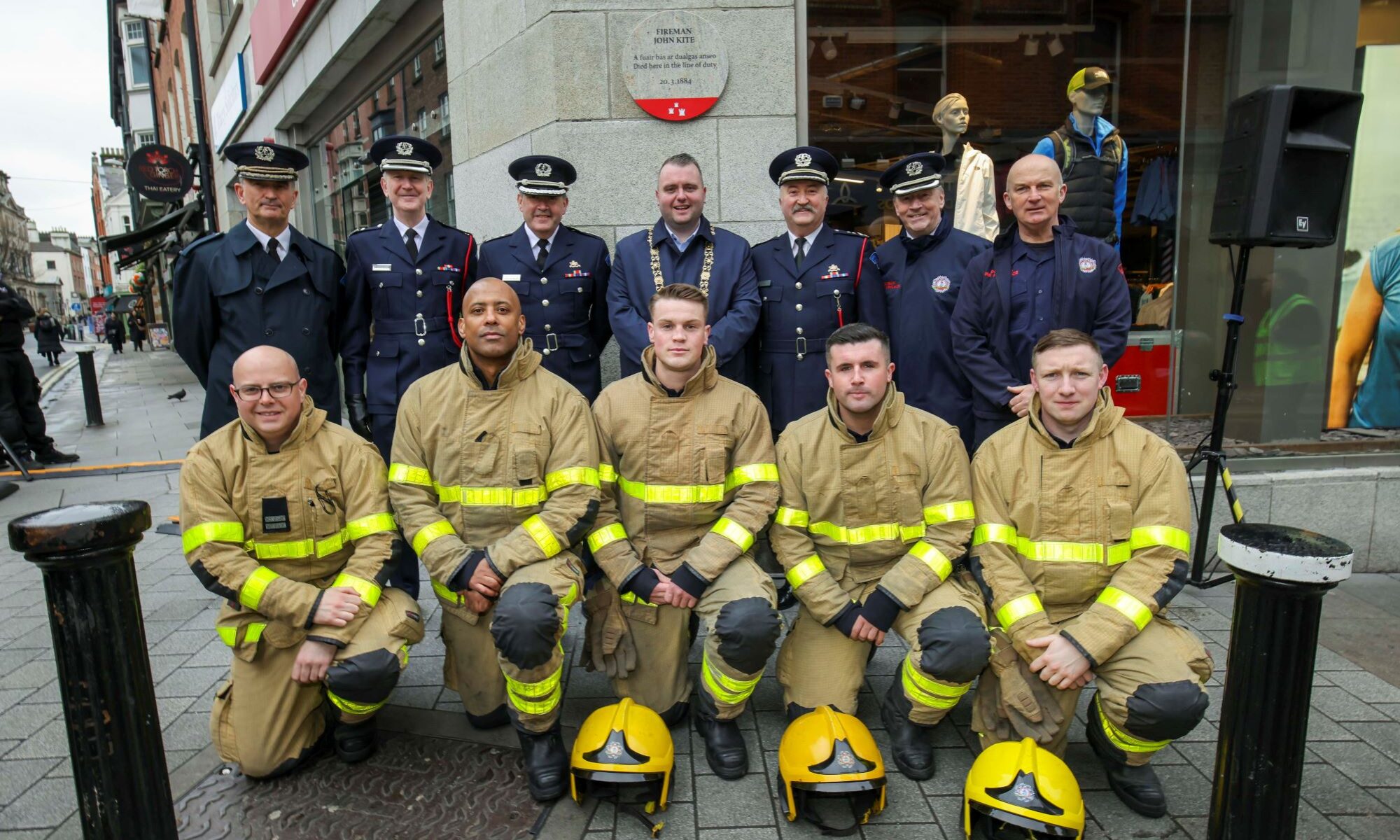
Plaques of Dublin: a Dublin city council project
Category: News
Three plaques unveiled in march and april 2024.
Dublin City Council is pleased to have unveiled three plaques over the past two months.
On 20 March the Lord Mayor and the Assistant Chief Fire Officer unveiled the third in a series commemorating Dublin firefighters who were killed in the line of duty.
Fireman John Kite died on 20 March 1884 while attending a fire at 10 Trinity Street; he was the first member of the Dublin Fire Brigade to be killed in the line of duty.
On 23 March the Lord Mayor, Daithí de Róiste, and the President of the GAA, Jarlath Burns, unveiled a plaque at the Drumcondra AFC club house, Richmond Road, commemorating Clonturk Park as the venue for the All Ireland finals in 1890, 1891, 1892, and 1894.
Most recently, on 5 April 2024, the Lord Mayor unveiled a plaque to mark the site of Devlin’s Pub , one of the main locations for meetings of GHQ Headquarters of Intelligence during the War of Independence.
The next plaque to be unveiled, on 21 May, is for James Plunkett, author of Strumpet City .
Dublin writer Maeve Brennan to be honoured by Dublin City Council
On 6 January 2024 at 11 a.m., Dublin City Council will unveil a commemorative plaque for the writer Maeve Brennan, at her childhood home in Ranelagh.
Speaking at the ceremony, and alongside the Lord Mayor, will be writer Sinéad Gleeson, who is a great champion of Maeve Brennan’s work.
Born in Dublin on 6 January 1917, the writer and New Yorker columnist lived with her family at 48 Cherryfield Avenue, Ranelagh, until 1934, and many of her short stories are set in the house.
The unveiling takes place on Maeve Brennan’s birthday, happily coinciding with Nollaig na mBan.
Plaque marking the original RHA Gallery unveiled
The building which originally housed the Royal Hibernian Academy of Arts (RHA) has been memorialised by a Dublin City Council commemorative plaque.
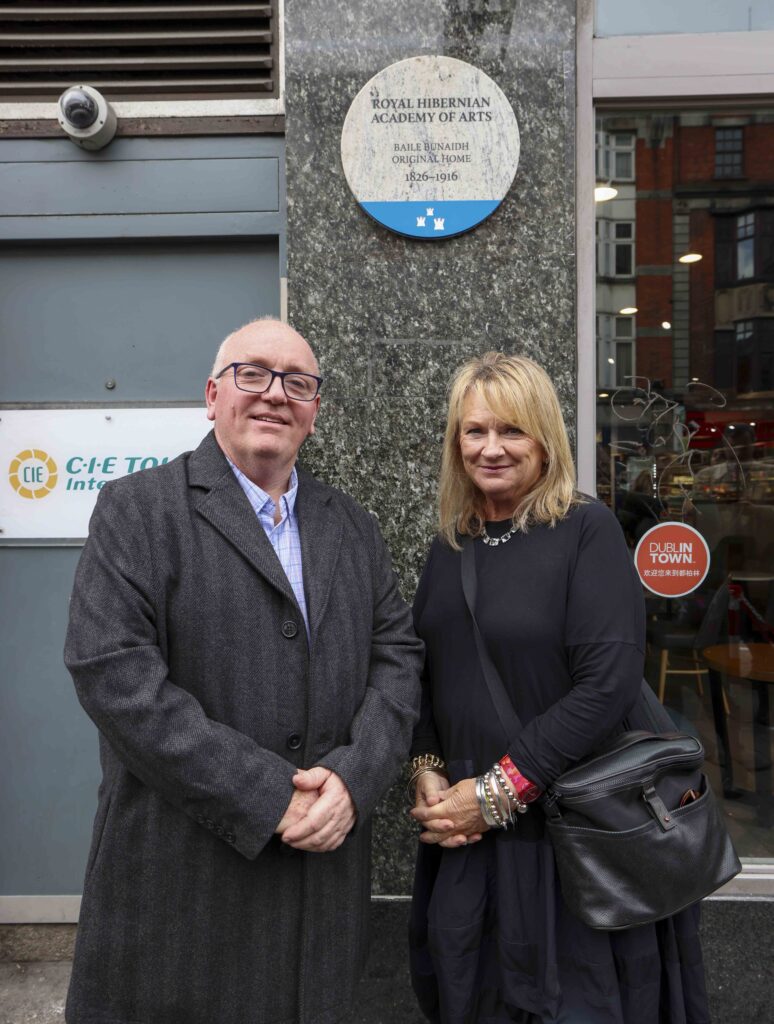
The Royal Hibernian Academy was founded in August 1823 and from 1825 to 1916 had its home at 35 Abbey Street.
35 Abbey Street was designed by the architect Francis Johnson, the second President of the Royal Hibernian Academy. As architect to the Board of Works from 1805, Francis Johnson worked on several of Dublin’s major public buildings, including the Chapel Royal and Record Tower in Dublin Castle, the vice-regal lodge (now Arás an Uachtárain) in the Phoenix Park, and the GPO and Nelson’s Pillar on O’Connell Street.
Johnson was a great support of the Academy and designed and paid for the gallery building himself; it cost around £15,000. He laid the first stone in a ceremony on 29 April 1824, and the first annual exhibition opened in the gallery on 23 April 1826.
Built in the neo-Classical style as a four-bay, three-storey building, the building was destroyed in 1916 but the front façade was retained and largely rebuilt around 1920. For many years it was the premises of CIE Travel.
Speaking at the unveiling of the commemorative plaque, Dr. Abigail O’Brien President of the RHA said “All of us at the RHA are delighted with the renewed focus on our origins and in celebrating this building which was such an integral part of our foundation. We appreciate the significance of this recognition by DCC and welcome this plaque as a monument to our beginnings and a reminder of why we do what we do; with passion and care for the Arts and all Artists.
Representing The Lord Mayor of Dublin at the unveiling, Cllr Vincent Jackson said, “This plaque is a small recognition of the two centuries of care and protection of the Arts that the RHA has gifted the people of Ireland with. Without their steadfast stewardship, tutelage and attention to detail, the creative landscape of Ireland would be unrecognisable today. For a land of writers, poets and artists, we owe a great debt to the RHA for the endless compassion and support they have given our creatives for the past one hundred years.”
James Connolly plaque to be unveiled by Dublin City Council
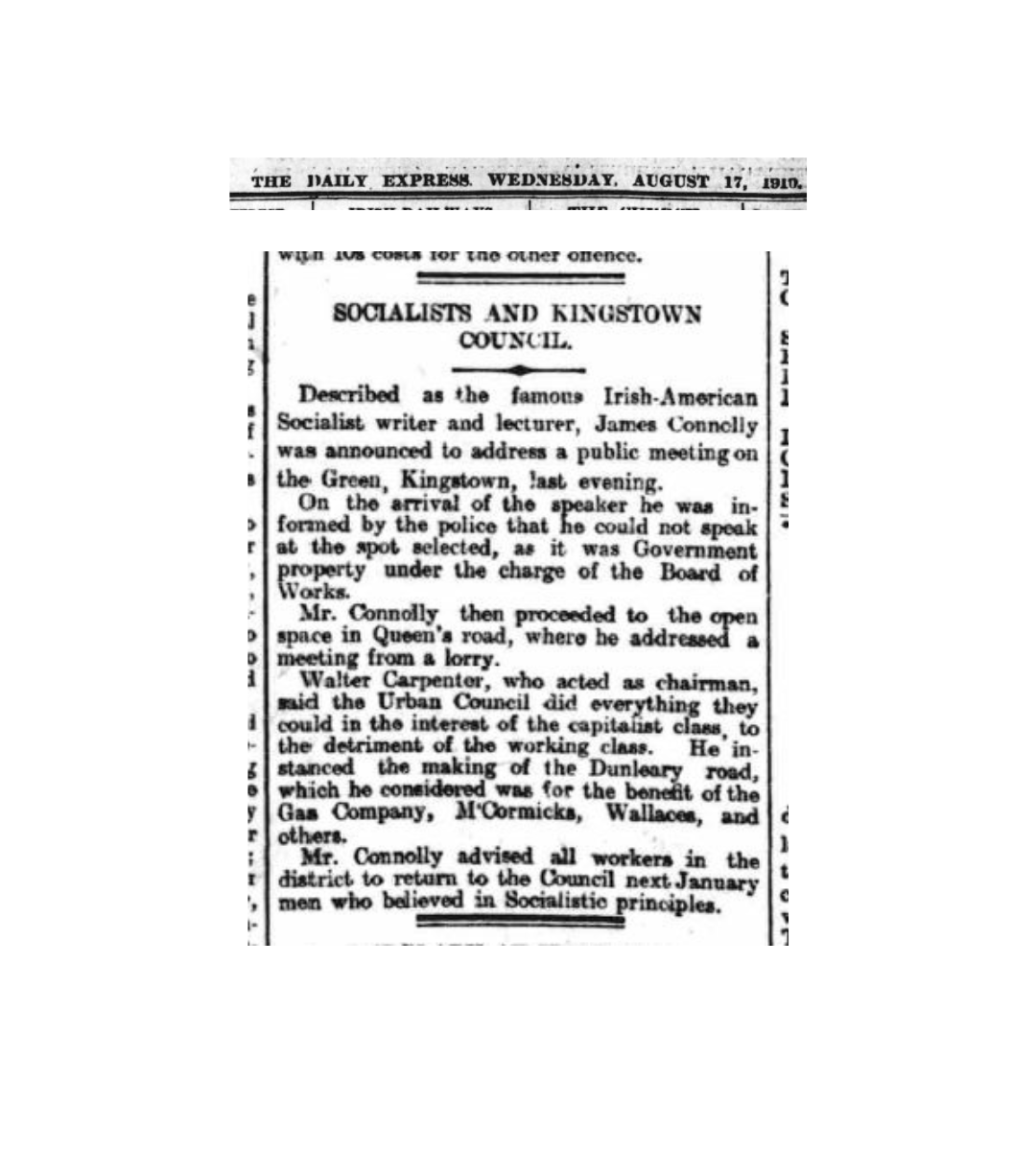
James Connolly, socialist and signatory of the 1916 Proclamation, is to be commemorated by a Dublin City Council plaque.
Born in Edinburgh in 1868, to Irish parents, Connolly became a key figure in the Irish trade union movement and socialist politics, particularly after his return to Dublin from the United States in 1910.
From December 1910 to May 1911, Connolly and his family lived at 70 South Lotts Road , where the plaque will be unveiled at 11.30 a.m. on 31 July 2023 . (The house is one of two surviving in which Connolly lived in the city.)
Connolly then moved to Belfast as organiser for the Irish Transport and General Workers Union (ITGWU), where he saw at first hand the sectarianism that blighted Belfast and the North East generally.
In 1912, along with William O’Brien and Jim Larkin, and others on the Dublin Trades Council, Connolly was instrumental in getting the Irish Trades Union Congress to establish a political wing, giving birth to the Labour Party.
Connolly returned to Dublin from Belfast during the 1913 Lockout and following Larkin’s departure for America in 1914 he became acting General Secretary of the ITGWU and the leader of the Irish Citizens’ Army.
Following the Rising and aganist the background of the First World War, Connolly became increasingly militant and in 1915 threw his lot in with the IRB, who were planning an insurrection.
Joining forces with the Volunteers, Connolly was one of the signatories of the Proclamation and fought alongside Pearse in the GPO.
Following the surrender, and badly wounded and unable to stand, he was executed in Kilmaimham by firing squad, while sitting on a wooden box.
The plaque was proposed by historian Dr Conor McCabe, Queen’s University Belfast and approved by Dublin City Council’s Commemorations & Naming Committee.
Cyclist Shay Elliott commemorated
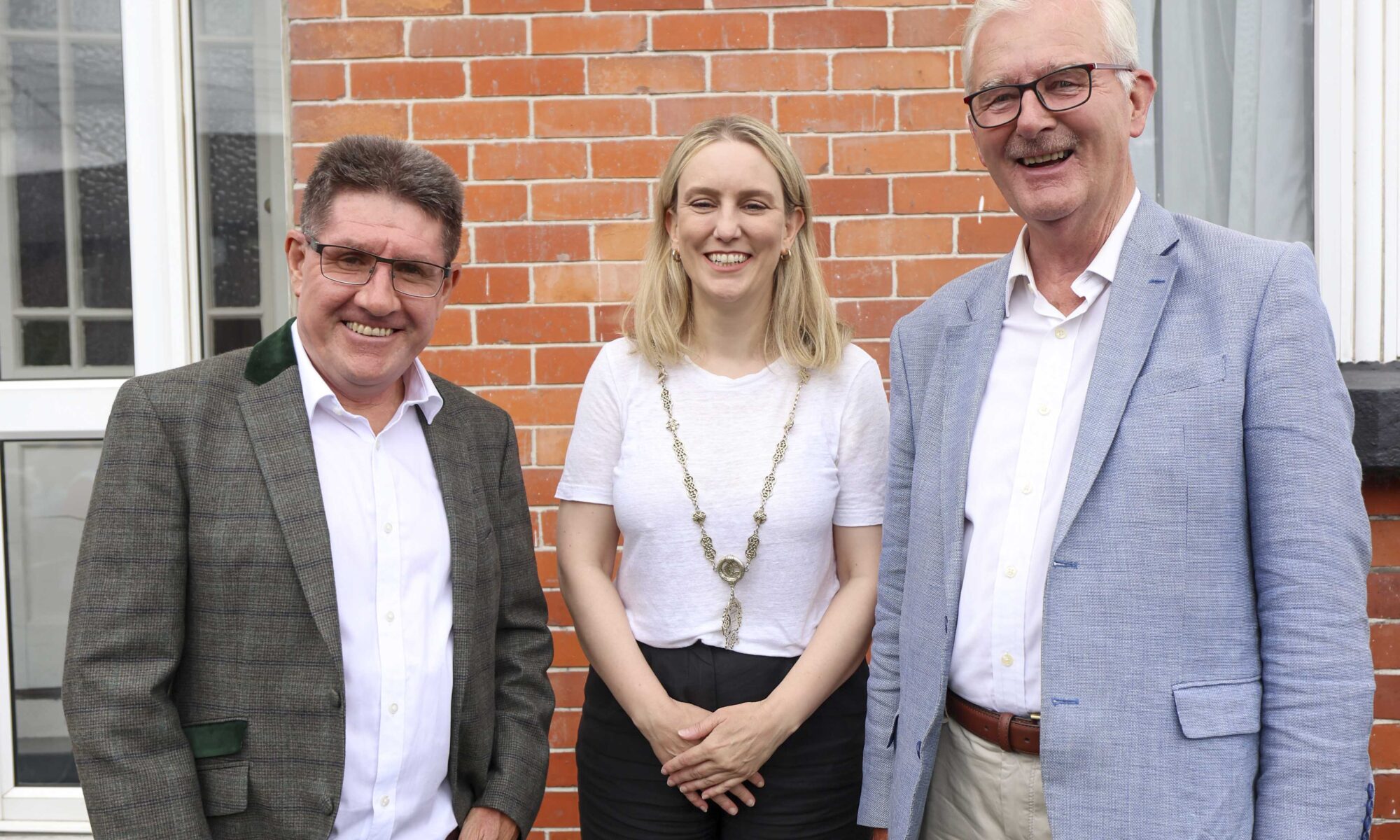
Dublin City Council has unveiled a commemorative plaque celebrating cyclist Shay Elliott, the first Irishman to win a stage in the Tour de France and to wear the Yellow Jersey.
The event took place at 96 Old County Road, Crumlin, on 23 June, with Councillor Carolynn Moore unveiling the plaque on behalf of the Lord Mayor Sports journalist and former professional cyclist Paul Kimmage was the guest speaker.
Dubliner Shay Elliott made history on June 1963 when he won the third stage of the Tour de France, taking the overall lead and wearing the ‘ maillot jaune ’ for three days.
The stage-win also made Elliott the first English-speaking rider to win a stage in each of the Grand Tours, adding to his victories in the Giro d’Italia and Vuelta a España.
It would be another 15 years before an Irishman won a stage and a further five years before an Irishman wore the Yellow Jersey in Le Tour, when Sean Kelly took it with a victory in stage 9 in 1983.
Shay Elliott was born at 96 Old County Road, Crumlin, Dublin, in 1934, and having served an apprenticeship as a panel beater, became a professional cyclist in 1956, following success in the amateur ranks. In 1955 he became the first foreigner to be ranked top amateur in France.
In 1958 he narrowly failed to win the Paris–Roubaix and Paris–Brussels classics due to mechanical faults and lost a sprint stage in the Tour de France by being blocked. Professional cycling could be ruthless.
Elliott rode as a super-domestique for nearly ten years with the five-time Tour de France winner, Jacques Anquetil, as his team leader. The team was widely regarded as the Galaciticos of professional cycling such was the quality of its riders.
In 1962 Shay competed in Salò, Italy for the World Road Race Championship. He won the silver medal, losing out to Jean ‘Stab’ Stablinksi, a teammate, best friend and godfather to his son, Pascal. Shay later claimed that Stablinski paid other riders to chase him down when he attacked on the penultimate lap thus denying him victory. The consensus among his peers was that he was cheated out of gold.
Deprived of certain victory in the 1965 Paris–Luxembourg stage race by one more betrayal by Stablinski, a devastated Shay left the team and joined Jacques Anquetil’s greatest rival, Raymond Poulidor at Mercier. Sadly the move proved to be a disaster. Looking to the future Shay invested his life savings in opening a hotel in Brittany. It haemorrhaged money and his marriage failed as a result. Faced with bankruptcy he returned to Ireland leaving his wife and son behind.
In the years that followed Shay rebuilt his life, setting up a garage on South Princes Street, Dublin, where he also lived. He regularly tuned into French radio to listen to the cycling coverage. He even dreamed of one more victory on the bike. With the near miss at Salò never far from his mind, he looked to competing in the World Road Race Championship in Leicester in 1970. Sadly, he never got to the starting line. Less than a year later and within weeks of the death of his beloved father Jim, Shay was found dead in his home. He had suffered a shotgun wound to the chest.
60 years on from taking the Yellow Jersey as race leader of the Tour de France, Shat Elliott should be remembered as a pioneer, a man who set many firsts in his cycling career, and achieved 50 race victories. His legacy is one that inspired future Irish legends to conquer the roads and the mountains of Europe.
Dublin City Council to unveil commemorative plaque celebrating the history of women’s tennis in Dublin.
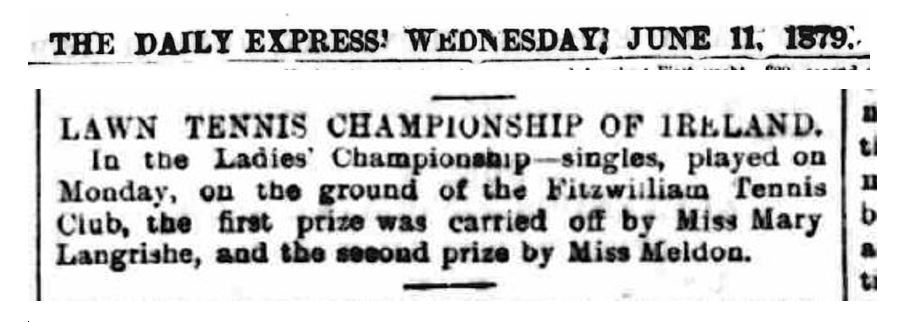
The next Dublin City Council plaques will commemorate the world’s first national tennis championship for women, which took place in Dublin on 9 and 10 June 1879.
The plaques will be unveiled by the Lord Mayor at 12 p.m. on 10 June 2023.
The Dublin tournament was held on the courts of Fitzwilliam Lawn Tennis Club, on Upper Pembroke Street, and preceded the Wimbledon Ladies’ Championship by five years. It wasn’t until 1884 that the Wimbledon Ladies’ Singles were first held.
The first Irish tennis clubs were founded in 1877 with tennis quickly becoming a popular sport. Writing about the 1879 Irish championships, the Freeman’s Journal called tennis the “monarch of amusements”, noting that “no properly brought up young lady or gentleman … would dare to express herself or himself unacquainted with … the fashionable game”.
The championships were organised by the Fitzwilliam Lawn Tennis Club, which was founded in 1877, and another plaque, commemorating the founding of the club, will also be unveiled at the Club’s first home, 24-25 Upper Pembroke Street.
Although the men’s competition took place in public on the courts in nearby Fitzwilliam Square, the ladies’ matches were held in the grounds of the club, to keep them “as private as possible”, and entry was restricted to club members.
In the final Miss May Langrishe, from County Kilkenny, defeated Miss D. Meldon in three sets, becoming the first Irish national ladies’ champion.
Irish language writer Seosamh Mac Grianna
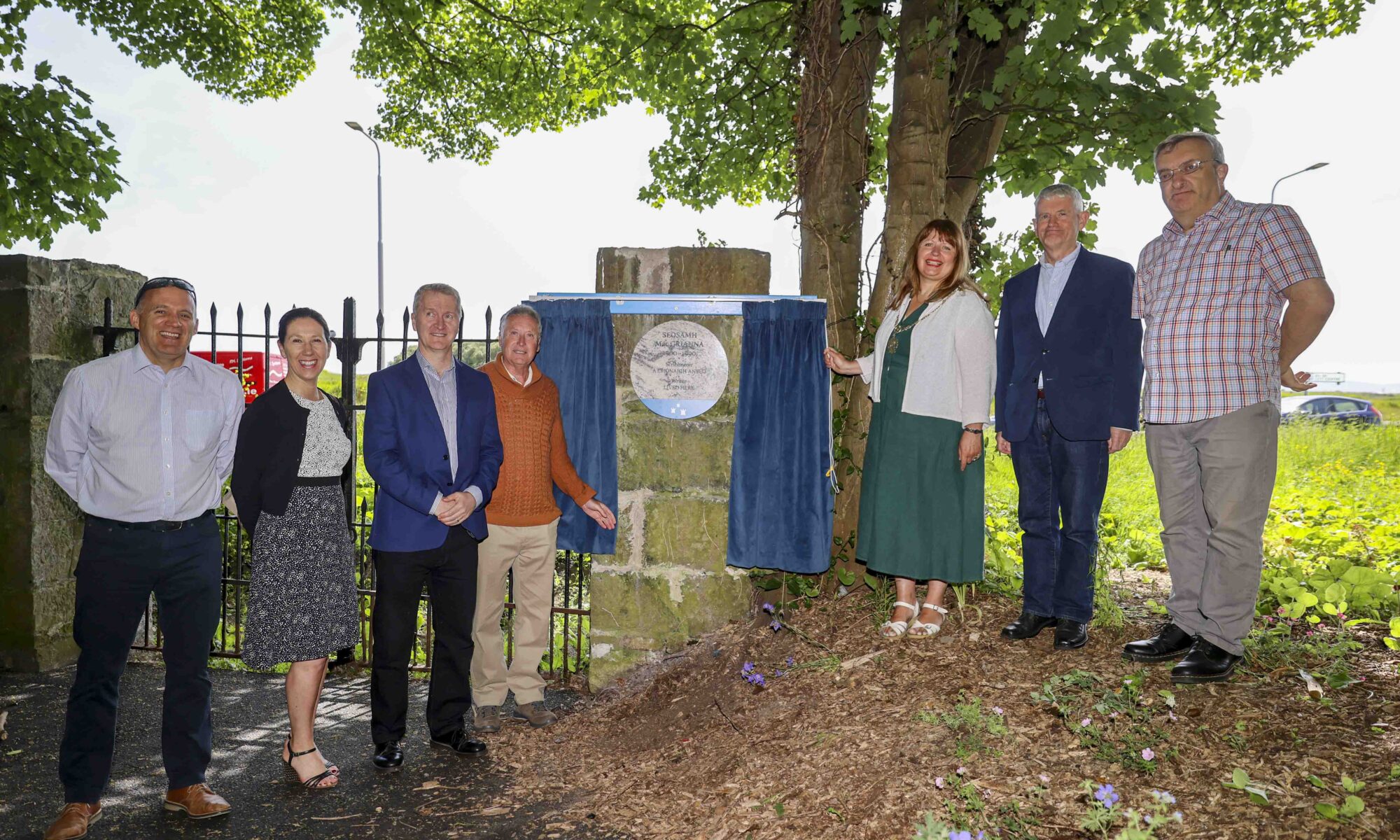
Dublin City Council unveils a commemorative plaque to the Irish language writer Seosamh Mac Grianna, at the site of his home in St Anne’s Park, Raheny.
Born in Donegal in 1901, Mac Grianna came from a storytelling background, and his brother Séamus Ó Grianna was also an Irish-language author.
Trained as a national school teacher in St Pat’s, Drumcondra, Mac Grianna was a staunch republican, took the anti-treaty side in the Civil War, and was interned in Newbridge camp.
In 1924 he began writing as Gaeilge and during 1924–5 he contributed many of his early short stories, including ‘Teampall Chonchubhair’, ‘Teacht Cheallaigh Mhóir’, and ‘Leas ná Aimhleas’, to the newly founded An tUltach. These later formed the basis of his first book, ‘Dochartach Dhuibhlionna & sgéalta eile’ (1925).
He also contributed numerous articles to a range of publications, including the Irish Press. Although his active literary career only lasted around eleven years, he made a significant contribution to the development of literature in the Irish language, publishing ten original works, translating twelve books into Irish, and also publishing a substantial number of reviews and letters.
Four particular books stand out within his body of work: An Grádh agus an Ghruaim (1929), An Druma Mór (1935/1969), Mo Bhealach Féin (1940), and Dá mBíodh Ruball ar an Éan (1940).
In the main, he ceased writing after 1935; in his own words “Thráigh an tobar” – the well dried up. Around this time, be began to suffer from psychiatric illness, which afflicted him for the rest of his life.
Mac Grianna lived in Dublin through the 40s and 50s, moving from place to place. Sometime around the early 1950s, he settled in a house on the coast road, in St. Anne’s Park, near Watermill Road. The commemorative plaque is erected on one of the remaining gate pillars of the house.
Speaking at the unveiling Cllr Donna Cooney, representing the Lord Mayor, congratulated the local Ciorcal Comhrá Raheny group who proposed that the plaque be erected, saying “comhgairdeas to the members of the Irish language group in Raheny who have ensured that someone who lived in our area and who contributed to the culture and artistic life of our City will not be forgotten.”
Also speaking at the unveiling was Proinsias Mac an Bheatha, whose father knew Mac Grianna: “Nuair a bhog Seosamh Mac Grianna isteach sa sean tí, laistigh de Pháirc Naomh Áine, ní raibh sé ag tabhairt aire dó féin. Bhí m’athair, Proinsias Mac An Bheatha, ag cónaí congarach leis i gCluain Tarbh. Mar sin thosaigh sé ag tabhairt roinnt airgid agus bia mar chabhrach dó ó am go ham. Bhí an-mheas ag m’athair air mar scríbhneoir agus dúirt sé liom go minic gur saghas James Joyce é don teanga Gaeilge.” (When Seosamh Mac Grianna moved into the old house within St Anne’s Park he was not looking after himself. My father, Proinsias Mac An Bheatha, was living nearby in Clontarf. He therefore he started to bring money and food to help him from time to time. My father often told me that he considered Seosamh Mac Grianna as the James Joyce of the Irish language.”)
An tOllamh Fionntán de Brún, who has written about Ma Grianna said “Bhí Seosamh Mac Grianna (1900-90) ar dhuine de mhórscríbhneoirí Gaeilge an 20ú haois, scríbhneoir a shaothraigh stíl dhearscnaitheach phróis nár sáraíodh go fóill. Baineann na blianta a chaith sé i gCluain Tairbh leis an taobh tragóideach dá shaol. Is mór is mithid an t-aitheantas seo a thabharfar anois dó sa phlaic chomórtha” (Seosamh Mac Grianna (1900-90) was one of the most important Irish writers of the 20 th century whose indelible prose style has never been surpassed. The tragic aspect of his life is inextricably linked to the years spent in Clontarf. The commemorative plaque is a timely and most welcome recognition of those years.”)
Dublin firemen commemorated with City Council plaque
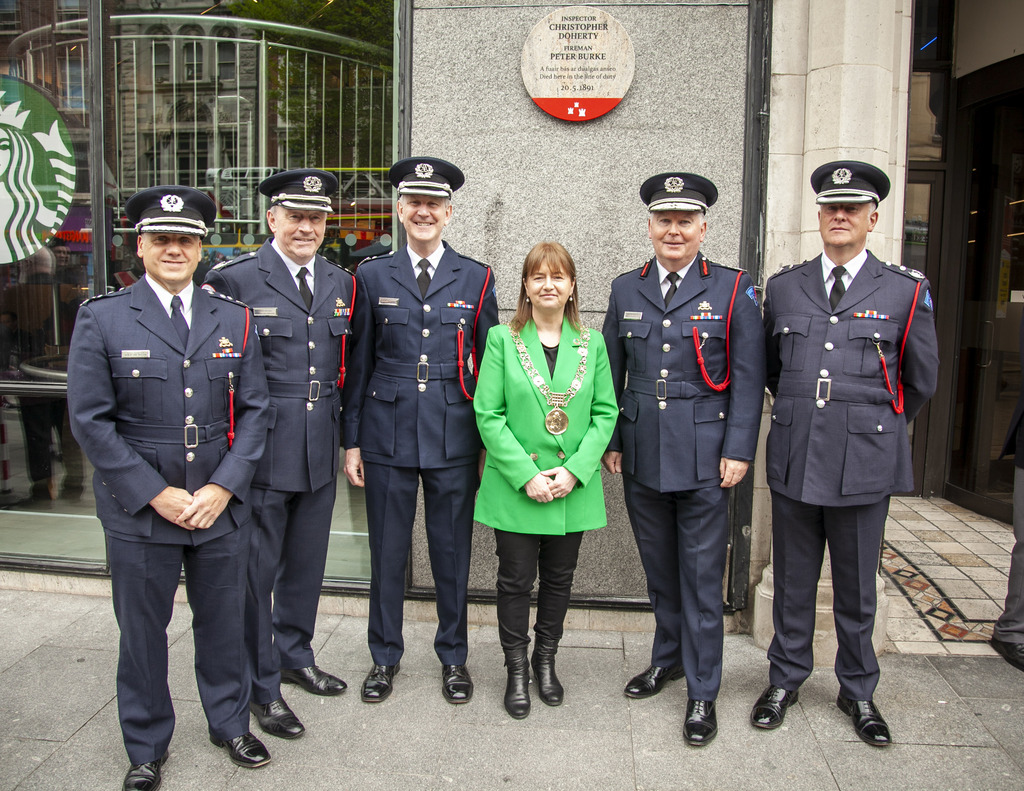
Two firemen who died attending a fire on the night of 20 May 1891 have been memorialised by a Dublin City Council Commemorative Plaque at 30 Westmoreland Street, now CCT College.
The plaque was unveiled by Lord Mayor Caroline Conroy and Chief Fire Officer Dennis Keeley on 19 May 2023.
In 1891, Graham’s chemist occupied the first two floors of the building, with Lafayette’s photographers on the next two, and living accommodation on the fifth floor. At approximately 2 a.m. on 20 May 1891 a fire was discovered on the third floor. There were four occupants on the fifth floor, two of whom managed to escape to the street and raise the alarm but two women were trapped on the fifth floor.
During the fire service response Inspector Christopher Doherty, 25 years’ service in Dublin Fire Brigade, holder of three chevrons for bravery for saving life on previous occasions, and Fireman Peter Bourke, three months’ service in Dublin Fire Brigade, paid the ultimate price in their role as firefighters and lost their lives here while saving the life of a civilian.
Dublin City Council unveils commemorative plaque to Thomas Bryan, one of the Forgotten 10 of the War of Independence

Thomas Bryan, one of the ‘Forgotten 10’ volunteers, has been memorialised by a Dublin City Council Commemorative Plaque at 14 Henrietta Street.
Bryan, a 24 year old electrician, was amongst a group of young volunteers who on 21 January 1921, set out to ambush Black and Tans as they travelled into Dublin city from Gormanstown. Another volunteer was 19 year old Frank Flood, after whom the bridge at Drumcondra was named in 2021.
Having been spotted in Drumcondra the party tried to escape via Gracefield Road and Clonturk Park, but surrendered after one the men was shot and killed.
Tried and found guilty of High Treason, four of the men, Patrick Doyle (29); Francis Xavier Flood (19); Thomas Bryan (24), and Bernard ‘Bertie’ Ryan (21) were hanged at Mountjoy Prison.
Thomas Bryan was only recently married, and the pension application, submitted by his grieving family, reveals the poverty in which his parents continued to live at 14 Henrietta Street in the aftermath of his death
Speaking at the unveiling, Lord Mayor Caroline Conroy said, ‘In unveiling this plaque today we remember the sacrifices made by those who fought in the War of Independence. Thomas Bryan and his comrades, Patrick Doyle, Frank Flood, and Bertie Ryan, were young men who paid the ultimate price for their actions. They left behind grieving families who, certainly in the case of Thomas Bryan, had also to face the very real poverty that afflicted many Dubliners of the time.’
Historian Fergus Whelan spoke about Thomas Bryan and the events that led to his execution, saying: ‘Thomas Bryan is one of the so called “Forgotten Ten” who were executed in Mountjoy Gaol between late 1920 and early 1921. The “Forgotten ten” is something of a misnomer, for two reasons. First, the name of Kevin Barry who was executed in November 1920 is well known to us. Second, Thomas and his comrades were never forgotten by the loved ones they left behind. Those loved ones did not just suffer the terrible loss of a family member to the hangman’s noose. They were denied the chance to bury their dead and a grave to grieve over for eighty years.’
The decision to erect the plaque was made by the Dublin City Council Commemorations & Naming Committee, whose chair, Councillor Micheál Mac Donncha, said, “The Commemorative Plaques Scheme allows the City to formally commemorate people who have made a significant contribution to the life of Dublin. We welcome suggestions from the public for people and events to be commemorated, and full details are on the Council website.”
Thomas Bryan, one of the ‘Forgotten 10’, to be commemorated

The next plaque to be erected under the Dublin City Council scheme will commemorate Thomas Bryan, one of the ‘Forgotten 10’, hanged in Mountjoy in 1921.
The plaque will be unveiled by Lord Mayor Caroline Conroy at 11.30 a.m. on Tuesday 14 March 2023 , at 14 Henrietta Street, Dublin 1 .
Donal Fallon has written a short piece on Thomas Bryan for the 14 Henrietta Street museum .
13 useful things to know before you visit Dublin
Apr 15, 2024 • 10 min read
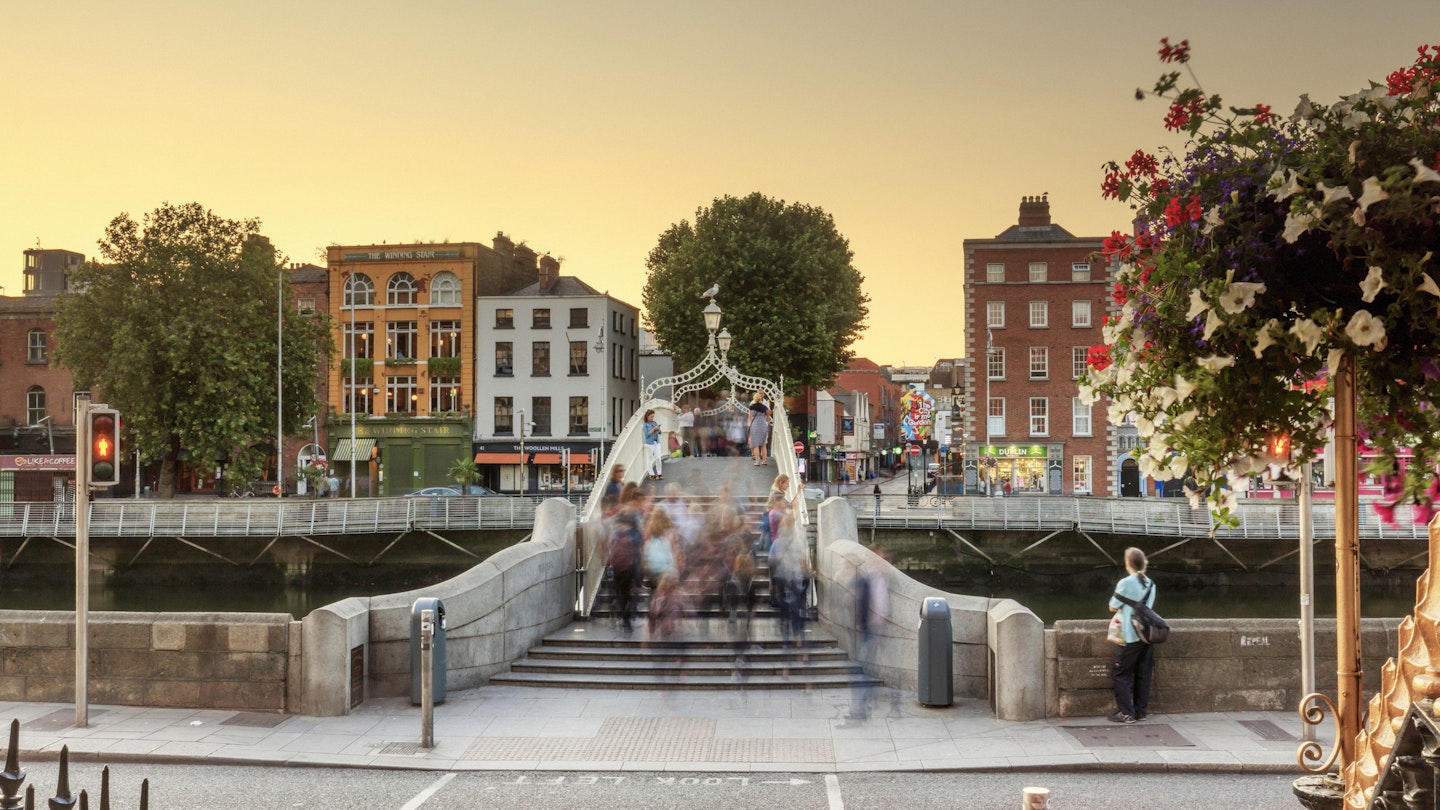
These local tips on packing, transport and etiquette can help you plan the perfect visit to Dublin © maydays / Getty Images
As a born and bred Dubliner, I’ve spent most of my life trying to make sense of my hometown.
In one way it’s a cinch to figure out: you’ll get your bearings pretty quickly and realize that you can explore most of it on foot. But it’s not just its size that makes it such a great walking city. It’s the nature of life here that makes it the ideal flaneur destination, where you amble and devote yourself to the art of observing life around you.
Spend a few days in Dublin and you’ll soon appreciate that there is much going on in this busy little town, and that to really understand the place you’ll have to move here and spend the rest of your days figuring out its wonderful idiosyncrasies and multilayered sense of humour.
In the meantime, though, here are a few local tips that will smooth your introduction to a city that has the power to grab your imagination and not let it go.
1. Plan on having at least three days in Dublin
Dublin might be a small capital city, but it’ll demand as much time from you as you’re willing to give. You’ll need at least three days to even make a dent in the place: one day to explore even just a couple of the main sights, such as Trinity College and the Guinness Storehouse . You’ll need another day to visit some of the city’s other brilliant attractions, like the Little Museum of Dublin , the Chester Beatty and just one branch of the National Museum of Ireland . And a third day to sample some whiskey and visit either of the city’s iconic cathedrals .
A couple of days more will give you a chance to stretch your legs and explore more of the city – such as the historic General Post Office and 14 Henrietta St on the northside. But you’ll have to build in some leisure time – after all there are 800 pubs in the city , a fine selection of music venues and a handful of great theatres. And what about going further afield, on a day trip to Howth , for instance, or beyond?
Planning on some beers while you're in Dublin? Here's our guide to the locals' favorite traditional pubs
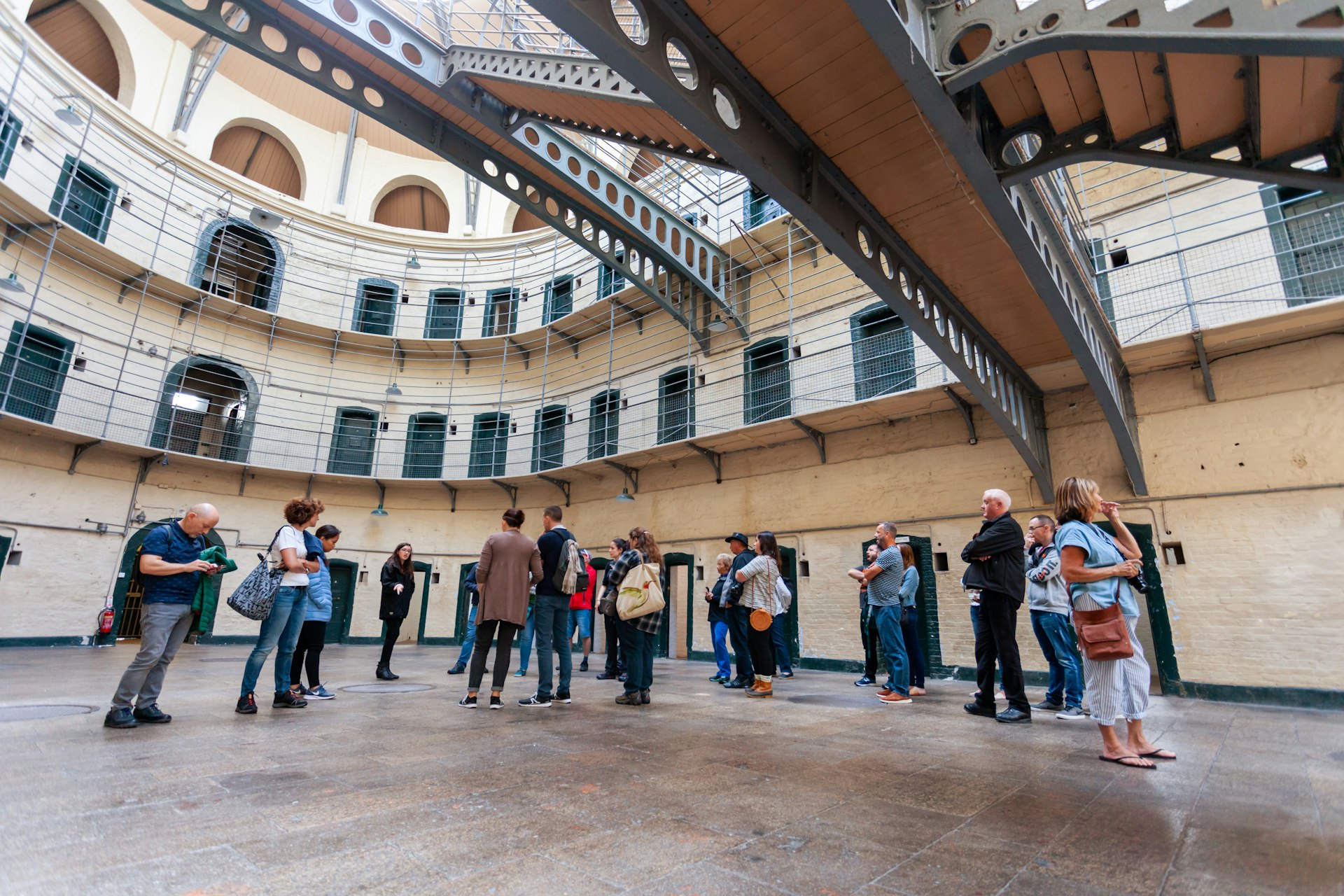
2. Dublin is a casual kind of place so pack accordingly
You can wear pretty much whatever you want in Dublin, and smart casual is the most you’ll need for fancy dinners, the theater or the concert hall. Even most work places like to keep it casual as there’s a general perception in the city that dressing up is only for that special occasion, which work rarely is.
Irish summers are warm but rarely hot, so you'll want an extra layer for when the temperatures cool, especially in the evening when the disappearing sun can make that day’s warmth feel like a distant memory.
Ultimately, the ever-changeable weather will determine your outfits, but a light waterproof jacket (preferably with a hood, unless you’re carrying an umbrella) and waterproof shoes should never be beyond reach, for the almost inevitable rain.
Plan your packing with our seasonal guide to Dublin through the year
3. Take advantage of discount cards
There is a range of discount cards that will save you money on attractions and transport. The GoCity All-Inclusive Pass (1–5 days, €79–164) gives you free entry to a bunch of top attractions, including the Guinness Storehouse, EPIC The Heritage Museum, the Jameson Distillery Bow Street, and the Big Bus Hop On, Hop Off tour. For 25% off six of those attractions, there’s the DoDublin Days Out Card (€55).
As well as the Leap Card (see below), there are good discounts to be had with the DoDublin Freedom Ticket (€48), a 72-hour travel pass that covers all public transport as well as a hop on, hop off tour.
4. Get a Leap card for use on public transport
If you’re planning on using public transport in Dublin, be sure to get a Leap Card first, as it’s cheaper and more convenient than paying for fares directly. This green plastic card is available from most newsagents and can be used on all forms of transport in the city, including buses, DART, the Luas light rail system and commuter trains throughout the county. The Leap Visitor Card (1/3/7 days, €8/€16/€32) provides unlimited travel on public transport. It can be purchased in the city and at Dublin Airport, or ordered online and delivered to your home in advance of your trip.
To use the card, just tap your card on the machine as you get on: for Luas, rail and DART services you will also need to tap off when you get off (but not for buses).
You top up the card with any amount you want (there’s a minimum of €5) at newsagents, any Luas, DART and commuter rail machines, or by downloading the Leap Top-Up App onto any NFC-enabled iPhone or Android phone: hold the card to the back of the phone and you can top up, collect pre-paid tickets and check your balance.
If you’re using a regular Leap card, rather than the Visitor Card, the TFI 90 Minute Fare applies to journeys made by Dublin Bus, Luas and most Dart trains. Any journey less than 90 minutes (including transfer times) costs €2.
Here's more useful transportation information for Dublin
5. Uber is not the best taxi option in Dublin
There are plenty of taxis in Dublin, but they can be tough to find late at night, especially at weekends when thousands of Dubliners are looking to head home to the suburbs after a night out in the city. Uber does exist in Dublin, but it’s oddly expensive; by far the most popular taxi hailing app is Freenow , which most of the city’s taxis are connected to. There are taxi ranks in the city center, but hailing them through the app is the preferred (and most convenient) option for most.
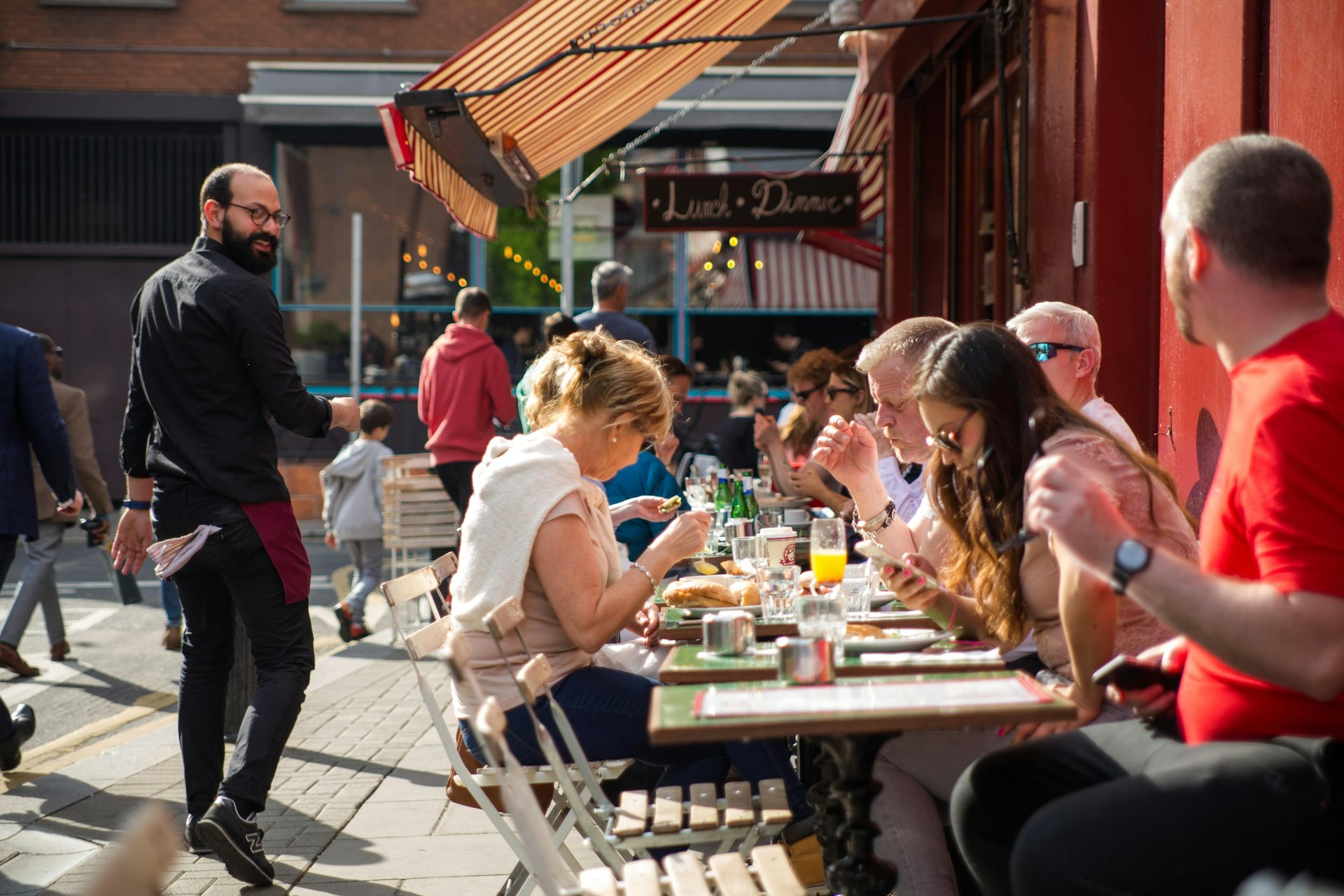
6. Get to grips with Dublin’s dining habits
Dubliners rarely eat breakfast out, so you might struggle to find a decent spot for breakfast that opens before 9am or 9:30am. The good news is that a decent cup of coffee is a non-negotiable, so there are plenty of places open by 8am to cater for caffeinated employees.
Discounted lunch specials are common, especially in the busy city center. Book tables at popular restaurants at least a few days in advance if you want to avoid disappointment or dodge the 5:30pm seating nobody else wants. For the really fancy spots including those with Michelin stars, you’ll have to plan well in advance. Some (like Restaurant Patrick Guilbaud ) will accommodate reservations no more than a month in advance, but a place like Chapter One opens its reservations list three months in advance, and then only for blocks of two months. Most tables are nabbed up pretty quickly, but if you miss out you can join the online waitlist.
7. Many of the city’s museums are free to visit
Most of the city’s larger cultural institutions are free to visit, including the three branches of the National Museum of Ireland, the National Gallery , the Chester Beatty and the Dublin City Gallery-the Hugh Lane – although there is a charge for some of the exhibitions. There are free tickets for the tours of Áras an Uachtharáin , the official residence of the Irish president in Phoenix Park and there is no charge to visit the Irish Museum of Modern Art in Kilmainham.
Smaller, privately owned museums charge a fee, but it’s rarely more than €10, and you won’t need to book your ticket in advance.
Traveling to Dublin on a budget? Here are some other free experiences to consider
8. Bottled water is a needless extravagance
In most restaurants in Dublin you’ll be offered the choice of water – still or sparkling. Unless you have a particular fondness for a specific brand of bottled water, you should always opt for tap as the city’s supply is perfectly safe, free and generally excellent. Some restaurants operate their own in-house filtration system, so for a minimal cost (usually €1–2) you have your choice of still or sparkling tap water. Same goes for filling your water bottle: tap water is fine and you don’t need to buy pricey and environmentally unfriendly plastic bottles to replenish your supply.
9. In the pub, it’s all about the rounds system
Dubliners, like the rest of the Irish, put great store in conviviality and a generous spirit. And both of these qualities are embodied in the rounds system, whereby if someone buys you a drink, you are obliged to buy them one in return. Getting sucked into the rounds system is a great way of getting to know Dubliners: strike up a conversation and, at the appropriate moment (ie when they’re just about to finish their drink), ask what they’re "having" – and before you know it you’re multiple drinks and conversations deep into a blossoming friendship.
Needless to say, you don’t have to take part in buying rounds, but if you want to understand the social glue that binds people together in Dublin, there aren't many better ways than having a few drinks with them.
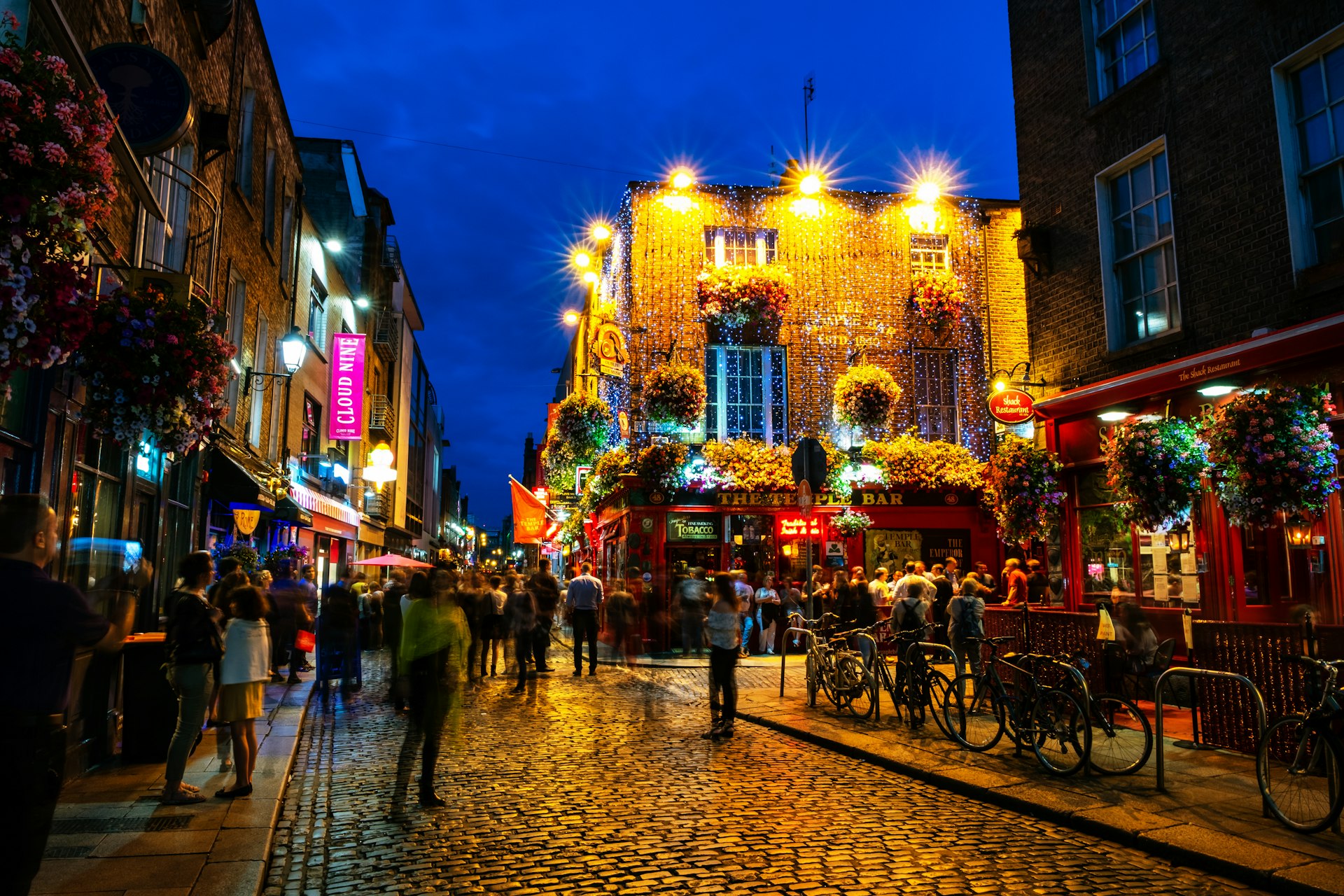
10. Dublin's nightlife is expensive
Dubliners love a good night out, but the city is a pretty expensive place to party in. The capital is notorious for the price of the pint of beer, which is higher than anywhere else in Ireland. As a result, many Dubliners will do pre-drinks at home before heading out, usually between 9 and 10pm.
Happy hour promotions are illegal in Ireland; expect to pay anything from €7–10 for a pint in the city center, but keep an eye out on pubs that sneakily raise the price of a pint later in the night, presumably when punters are too drunk to notice. It’s illegal to charge a price other than what is indicated; if it happens, your best reaction is to complain and leave.
Licensing laws are stricter in Dublin than almost any other European capital. Pubs can serve alcohol until 11:30pm Monday to Thursday, to 12:30am Friday and Saturday, and to 11pm on Sunday. Many premises apply for special exemption orders, which allows them to serve until 2:30am – usually from Thursday to Saturday nights. Nightclubs usually go until 3am, but in a lot of venues there’s barely a distinction between a huge pub that turns up the music really loudly and a dedicated club for dancing.
11. Learn to take a "slagging" among friends
Dubliners are, for the most part, an informal and easy-going lot who don't stand on excessive ceremony and generally prefer not to make too much fuss. That doesn't mean that they don't abide by certain rules, or that there isn't a preferred way of doing things in the city, though. But the transgressions of the unknowing are both forgiven and often enjoyed – the accidental faux pas is a great source of entertainment in a city that has made "slagging", or teasing, a veritable art form.
Indeed, slagging is a far more reliable indicator of the strength of friendship than virtually any kind of compliment: a fast, self-deprecating wit and an ability to take a joke in good spirits will win you plenty of friends. Mind you, even slagging has its hidden codes, and is only acceptable among friends: it wouldn't do at all to follow an introduction to someone by making fun of them!
12. LGBTIQ+ travelers are welcome in Dublin
Dublin has a pretty vibrant LGBTIQ+ scene, with some well-established bars and club nights as well as activities including hiking and sea swimming. The best-known gay bar in town is the George on South Great George’s St, followed by Pantibar , which is owned by renowned activist and drag queen Rory O’Neill, aka Panti Bliss. June’s Pride Festival is the second-biggest celebration in the city after St Patrick’s Day, a raucous festival of color and fun that runs over five days. August sees GAZE International LGBTQIA Film Festival , Ireland’s only dedicated film festival, while the International Gay Theatre Festival usually takes place in May.
13. Dublin is generally a safe city with good health care
Health and safety should not be an issue during a visit to Dublin. Pharmacies selling basic medication are easy to come by, and crime is not a major concern. Taking normal precautions (eg keeping an eye on belongings in crowds) should be sufficient. O'Connell St and the streets immediately around it can get a little shady after dark, so keep your wits about you.
Explore related stories
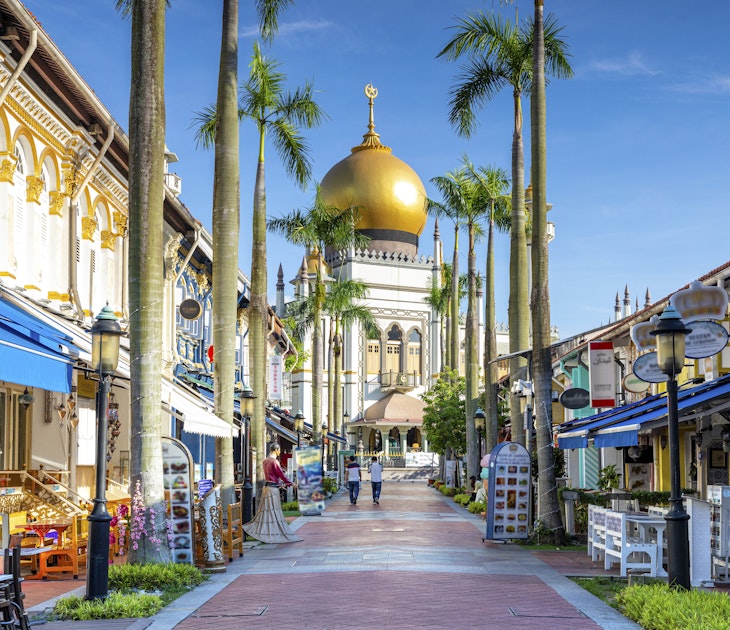
Tips & Advice
Apr 16, 2024 • 12 min read
Singapore's allure goes beyond its iconic hotels, manicured gardens and world-class airport – here are the best places to visit when you arrive.

Apr 16, 2024 • 8 min read

Apr 16, 2024 • 6 min read
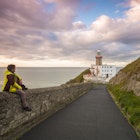
Apr 15, 2024 • 7 min read

Apr 16, 2024 • 13 min read

Apr 16, 2024 • 5 min read

6 Delightful Day Trips from Dublin Ireland to Take in 2024
Taking a trip to the Emerald Isle? You’re probably planning to spend a few days in Dublin, the lively capital of Ireland.
But there are so many more amazing places to visit in Ireland! You should definitely take some day trips from Dublin to see more of the country’s must-visit attractions.
I spent four months living just outside of Dublin last summer. Whenever the weather forecast was pleasant (or at least not calling for a deluge), I’d spend my weekends exploring this beautiful country.
While it did take me a little while to get the hang of driving on the other side of the road in Ireland , I had a great time seeing everything from medieval architecture to Ireland’s stunning natural landmarks.
The Absolute Must-Do Activities
If you can do all the tours on this Dublin list, do it. But if you’re time is limited, these are my Dublin Day Trip faves:
- Visit the town of Kilkenny.
- Take a day trip to the Cliffs of Moher along Ireland’s famous Wild Atlantic Way.
- Drink a Guinness at a local pub.
Ready to learn about the best day trips from Dublin?
Lace up your shoes and let’s go!
1. Kilkenny
Kilkenny is one of my favorite Dublin day trips. It’s only an hour and 30 minutes by car or about an hour and 40 minutes via public transport.
Kilkenny is known as Ireland’s Medieval Mile, and history buffs will love exploring the ancient sites scattered throughout the city.
One of Kilkenny’s top attractions is Kilkenny Castle. This imposing castle dates from the 12 th century and is surrounded by lush green lawns. While you can take a self-guided tour, it’s worth the upcharge for the guided tour to learn about its intriguing history.
Kilkenny is filled with historic cathedrals. The most important is St. Canice’s Cathedral, which boasts beautiful stained-glass windows and an impressive pipe organ. If you’re not afraid of heights, climb the Round Tower. You’ll get a workout climbing the ladders to reach the top of the tower, but you’ll love the panoramic views of the countryside!
Enjoy traditional Irish food and daily live music at Matt the Millers. Be sure to sample a pint of Smithwick’s Red Ale (the Smithwick’s brewery was founded here in Kilkenny).
If you’re visiting Kilkenny with your family, check out the National Reptile Zoo – the only one in Ireland! Or take a short drive to the Castlecomer Discovery Park and get your adrenaline pumping on Ireland’s longest zip line.
2. Limerick
Another excellent choice for a Dublin day trip is Limerick. It takes about 2 hours and 20 minutes to drive here from Dublin. The fastest public transportation option takes around 2 hours.
The main attractions in Limerick are within a compact area, so it’s easy to do your sightseeing on foot.
The most popular activity in Limerick is visiting King John’s Castle. This imposing medieval fortress will transport you back to medieval times. Learn about history through the museum’s exhibits, then climb the towers and enjoy excellent views of the River Shannon from the ramparts.
Don’t miss the beautiful Saint Mary’s Cathedral with its stunning stained-glass windows. Check out the Celtic crosses marking the grave sites in the adjoining burial ground. For a memorable experience, attend a concert at the cathedral!
Museum enthusiasts will enjoy exploring the treasures of the Hunt Museum, housed in Limerick’s former Customs House. Its collections contain a wide variety of art and medieval artifacts. Don’t miss the outdoor museum in the garden.
3. Cliffs of Moher
The Cliffs of Moher are one of Ireland’s most stunning natural wonders (they’re also a UNESCO Geopark). It does take about 3 hours and 15 minutes to drive from Dublin, and there aren’t any public transportation options.
This does make for a particularly long day trip, but the Cliffs of Moher are a must-see attraction. I recommend taking a group tour to see the Cliffs from Dublin. Many companies offer these day tours, allowing you to enjoy the scenery rather than worrying about the long drive.
Plan to spend a couple of hours walking along the paths and admiring the views around each curve. There is also a visitor center with interpretive exhibits and some dining options.
If you drive a little further up the coast to Doolin, you can take a boat tour and view the Cliffs of Moher from the perspective of the water.
Tip: While the cliffs are beautiful any time of day, I recommend visiting later in the afternoon to get the best pictures. I visited on a bright and sunny morning when the cliffs are shadowed. In the late afternoon and at sunset, the lighting would be phenomenal!
4. Newgrange
Newgrange is one of the most mystical sites in Ireland. It’s an easy 50-minute drive from Dublin, and it is definitely worth the trip. You can’t reach Newgrange via public transit, but you can join a tour group to visit Newgrange and the Boyne Valley from Dublin.
Newgrange is an incredible Stone Age monument in Ireland’s Ancient East and a UNESCO World Heritage Site. This large passage tomb was painstakingly constructed over 5000 years ago and is surrounded by 97 large kerbstones (some carved with megalithic art).
There are so many mind-boggling aspects to Newgrange. It is estimated that Newgrange took over 30 years to build. The materials were not locally available, so they would have had to transport them. The dimensions and orientation of the site needed to be perfect to align with the sun on the winter solstice.
On the morning of the solstice, the light from the roof box over the passage entryway shines through the passage and illuminates the chamber. There is such a demand for experiencing this event that there is a lottery to select who can be inside the chamber at this magical moment.
If you are a fan of the movie Braveheart , you’ll want to take a trip to Trim. It’s only a 50-minute drive from Dublin or a one-hour journey via bus.
The top thing to do in Trim is to visit Trim Castle, the largest Norman Castle in Ireland. This magnificent castle was made famous as the shooting location for the movie Braveheart , starring Mel Gibson.
Enjoy scenic castle views from the Trim Castle River Walk (walking along rivers and canals is a popular activity in Ireland!). Trim is also home to the oldest bridge in Ireland, which crosses the River Boyne.
Other points of interest to explore in the city include Trim Cathedral (also known as the Cathedral Church of St. Patrick) and the scenic ruins of St Mary’s Abbey.
Enjoy a bite or a pint at Marcie Reagan’s Pub, a local favorite. Be sure to duck your head as you enter!
6. Maynooth
Maynooth is one of the easiest day trips from Dublin. If traffic is light, it is a short 30-minute drive from Dublin, or less than an hour via public transit.
Maynooth is one of Ireland’s university towns, home to both Maynooth University and St. Patrick’s College. It is worth the visit to admire the architecture of the campus buildings (some even say that the south campus of Maynooth University resembles Hogwarts!).
Wander amongst the ruins of Maynooth Castle, or join the locals and enjoy a scenic stroll or bike ride along the Royal Canal Greenway.
Golf enthusiasts will love playing the courses at the gorgeous Carton House Golf Club, which has hosted several Irish Open tournaments. Choose between the O’Meara Parkland Course or the Montgomerie Links Course.
Local Tip: There is a massive Tesco Extra supermarket in Maynooth if you need to pick up supplies. I went here for all my big grocery shopping trips while I was living in Ireland.
Final Thoughts :
Whether you prefer experiencing the jaw-dropping natural beauty of the Cliffs of Moher or touring incredible medieval castles and cathedrals, these day trips from Dublin will not disappoint!
You’ll have a great time visiting any of these fabulous places in Ireland. Why not plan a few extra days into your Ireland trip and see them all?
Read More About Ireland
- 23 Fantastic Things to Do in Westport, Ireland
- 22 Travel Tips for Dublin & Beyond on a Budget
- 19 Fun Things to in Kenmare
- 10 Things to Know About Driving in Ireland
- 14 Amazing Things To Do Along Ireland’s Ring of Kerry
- 13 Breathtaking Vacation Rentals in Ireland
Recommended Travel Resources
* World Nomads provides travel insurance for travelers in over 100 countries. As an affiliate, we receive a fee when you get a quote from World Nomads using this link. We do not represent World Nomads or any other travel insurance company. This is information only and not a recommendation to buy travel insurance.
- Travel Insurance: World Nomads *.
- Transport: CheapOAir and Skyscanner (Best Sites to Research Flight Prices)
- Best Car Rental Deals: Rentalcars.com
- Best Sites to Find Hotel Deals: Hotels.com and Booking.com
- My Favorite Hotel Review Website: TripAdvisor
- Best Tours: Viator and Get Your Guide
- How to Pack for 2 Weeks in Europe (in one suitcase)
- Cheap Flights to Europe with Condor Airlines
Follow 52 Perfect Days on
Facebook | Twitter | Pinterest | Instagram
The post 6 Delightful Day Trips from Dublin Ireland to Take in 2024 appeared first on 52 Perfect Days .

Murder Most Confusing – Frank McNally on Flann O’Brien’s murder weapon, Henry Marsh’s finger, and a relocated Joycean plaque
The art and literature round.
The current owners have recently refixed the plaque on Dublin’s Mullingar House, firmly and more visibly, on the ground floor, just above the door
:quality(70)/s3.amazonaws.com/arc-authors/irishtimes/d408b07e-0ff8-4a26-8878-74aec64dccc4.png)
In the “art and literature” round of a table quiz to raise funds for Gaza journalists at the weekend, our Irish Times team had a heated debate about the wording of the following question: “What implement did the narrator first use to commit murder in Flann O’Brien’s The Third Policeman?”
The word “first” there was perplexing, at least for those of us who have read the book.
For those who haven’t yet, there is no need to issue plot spoiler alerts, since The Third Policeman is unusual among murder mysteries in revealing who did what, and how, in the opening sentence, viz:
“Not everybody knows how I killed old Philip Mathers, smashing his jaw in with my spade; but first it is better to speak of my friendship with John Divney because it was he who first knocked old Mathers down by giving him a great blow in the neck with a special bicycle-pump which he manufactured himself out of a hollow iron bar.”
:quality(70):focal(874x1335:884x1345)/cloudfront-eu-central-1.images.arcpublishing.com/irishtimes/VOKCFAAPOBBMZHVGA6D4BEWBQU.jpeg)
Jumping off the page – Lara Marlowe at the Bologna Children’s Book Fair
:quality(70):focal(2050x1086:2060x1096)/cloudfront-eu-central-1.images.arcpublishing.com/irishtimes/NV4ENBVD6NFLBE6IAKW3IVEOBA.jpg)
Recurring character – Tim Fanning on Kathleen Mavourneen
:quality(70):focal(956x347:966x357)/cloudfront-eu-central-1.images.arcpublishing.com/irishtimes/244IEP42QNGV7E67EJH6OMJU3U.jpg)
Call the Avant-Gardes – Frank McNally on drunken art models, legendary barmen, and 100 years of Finnegans Wake
:quality(70):focal(1080x738:1090x748)/cloudfront-eu-central-1.images.arcpublishing.com/irishtimes/DMAXXHITHFE2BNKTTWDKZW67RA.jpeg)
Thus, it is a spade the narrator uses – but exclusively, not “first” (which would imply that he killed again, later, with other implements – plot spoiler alert: he didn’t).
But was it possible the quiz-setter was confusing the fictional, unnamed narrator with the real-life one, Flann O’Brian aka Brian O’Nolan, who could, by the logic of his previous novel At Swim-two-birds, be himself guilty of the crime and who therefore might indeed be said to have “first used” the bicycle pump as his murder weapon?
After agonising for some time, we opted for the pump as the expected answer, while putting the spade in brackets, via a brief synopsis of the plot. In the event, it turned out to be the spade they were looking, although I think we got the point, after an appeal of howled indignation.
Sometimes you can know too much, clearly. Still, we did win the quiz overall, so that musn’t have been a major handicap. And naturally we returned the prize money, which like the rest of the proceeds went a fund to help Palestian journalists in Gaza, who have worse things to be worried about than fictional murders.
Returning yet again to the subject of Father Mathew’s missing fingers, I’m indebted to reader Des O’Neill for pointing me to the contrasting story of another Dublin statue which has one finger more than it should have.
Its subject is Sir Henry Marsh (1790-1860), whose stone likeness in the Royal College of Physicians, Kildare Street, is itself pointing, or at least crooking a right index finger elegantly in the air.
But in real life, Marsh could not have done this. For in attempting to become a surgeon as a young man, he accidentally deprived himself of the digit in question.
It became gangrenous from a self-inflicted cut with a scalpel and then had to be amputated, in the process forcing Marsh to revise his career ambitions and become a physician instead.
Whatever about physicians healing themselves, the sculptor John Foley later performed the miracle of restoring Marsh’s finger. But this was not just to cover up a doctor’s mistake.
As Ciara O’Neill wrote in the Winter 2023 issue of a Journal of Medical Humanities, “the smoothing out of pathology was a notable factor in some other celebrated statues of the period, most notably that of Josiah Wedgewood, the master potter.”
Suffering complications from smallpox, Wedgewood had to have one of his limbs amputated below the knee. But in a later statue by Edward Davis, he still had a full, and “perfectly symmetrical”, set of legs.
Another of the literature questions at the table quiz was an easy one: “In Joyce’s Ulysses, they’re not called ‘chapters’ – so what are they called?” And yes, reader, the answer is “episodes”.
But during a visit to Dublin’s Mullingar House on Tuesday, it struck me in passing that there might be a slightly more advanced Joycean question in the oddly-worded plaque above the door.
“Home of all characters and elements in James Joyce’s novel ‘Finnegans Wake’, it says, which sounds a little awkward.
But that “[H]ome of all C]haracters and [E]lements” was Dublin Tourism’s attempt to include the letters HCE, for Humphrey Chimpden Earwicker, aka “Here Comes Everyone”, the shape-shifting male protagonist whose initials are ubiquitous in the book.
When I say it “struck me in passing”, I don’t mean the sign, although that used to occupy a more elevated position on the building’s upper storey, held in place with somewhat distressed fittings. Left to nature, it threatened to fall off eventually and perhaps brain a Joycean scholar on the way in or out of the pub.
This terrible scenario was hinted at on Tuesday by Andrew Basquille, who was part of a centenary reading of the novel’s Mamalujo section, for which the bar was packed even at 11am. Fortunately, as Basquille pointed out, the current owners have recently refixed the plaque, firmly and more visibly, on the ground floor, just above the door.
IN THIS SECTION
Glass act – frank mcnally on the folk art of ‘god in a bottle’, retired shop assistant hit for €74,727 excise bill for unmarked diesel, gifting to your children make sure you don’t leave them with a big tax bill, woman dies after becoming trapped under car near wexford town, significant traffic disruption in dublin following luas crash, judge labels eir a ‘disgrace’ after court heard customer service manuals warned staff not to obey law, ‘ireland is a country of people who are very friendly, no shooting’, ronan o’gara’s role as pantomime villain added further fuel to leinster fire, latest stories, cabinet agrees to recommend posthumous presidential pardon to two executed men, barcelona implode as mbappé double guides psg into champions league last four, miriam lord: mary lou fires up the burners to roast new taoiseach, but simon harris keeps his cool, sabitzer sends dortmund past atletico to set up champions league semi-final with psg, number of homeless asylum seekers increases to over 2,400, up 700 from last week.
- Terms & Conditions
- Privacy Policy
- Cookie Information
- Cookie Settings
- Community Standards
latest in US News

Trump to visit bodega where clerk Jose Alba was hit with murder...

Soft-on-crime NY Speaker Heastie finally caves on increased...

NYC bouncer accused of fatally stabbing rowdy patron when bar...

Controversial CUNY Law grad now at helm of radical group gets...

China fueling US fentanyl crisis by subsidizing key chemicals,...

Here's what we know so far about the 7 jurors selected for...

10-year-old girl fatally mowed down by SUV in Brooklyn: cops

NYC parents give failing grade to public school class size law...
Live updates, women’s-only federal prison in california dubbed ‘rape club’ to close — stars like lori loughlin, felicity huffman did time there.
- View Author Archive
- Email the Author
- Follow on Twitter
- Get author RSS feed
Contact The Author
Thanks for contacting us. We've received your submission.
Thanks for contacting us. We've received your submission.
The women’s-only prison in California that was dubbed the “rape club” for the rampant sexual abuse inmates faced by staff will be closing, the Federal Bureau of Prisons announced.
Federal Correctional Institution in Dublin — where Lori Loughlin and Felicity Huffman served time — has already begun to move bags and carts of supplies out to buses in a parking lot in anticipation of the planned closure as all 605 inmates will eventually be shuttled off to other prisons in the country.
Bureau of Prisons Director Colette Peters admitted that even though the agency had “taken unprecedented steps and provided a tremendous amount of resources to address culture, recruitment and retention, aging infrastructure and — most critical — employee misconduct,” the efforts were insufficient.

Peters added FCI Dublin, which also once housed Hollywood madam Heidi Fleiss, is not meeting “expected standards” and the best option is to close the facility 20 miles east of Oakland.
Peters also noted Monday all employees at the prison would keep their jobs.
Trouble and illegal behavior by staff have been major issues at the prison over the last several years.
Eight FCI Dublin inmates claimed in a lawsuit against the BOP last August that the agency didn’t eradicate sexual abuse at the prison.
The lawyer for the group, Amaris Montes, said the closure indicates “the prison knows that they are not meeting constitutional standards to keep people safe from sexual assault and sexual harassment.”
She slammed transferring hundreds of inmates to other parts of the country and possibly far from their families.
“What the women have gone through at this facility, the abuse they suffered, that was punishment,” Montes said.
“They’re all low-security. Send them home, send them to supervised relief. Let them be productive members of society.”

The announcement comes days after a federal judge appointed a special master to oversee the prison.
An ex-warden of the prison, Ray Garcia , is one of two prison staffers to be convicted of sexually abusing inmates since 2021.
Another five staffers pleaded guilty with one case still pending.
Any sexual relations between inmates and guards are illegal in prisons.

A former prison chaplain, James Theodore Highhouse, was also convicted and sentenced to seven years for sexually assaulting a female inmate, the Los Angeles Times reported .
He was accused of predatory behavior with at least six women between 2014 and 2019, claiming God brought them together, prosecutors said.
“There is a culture of rot at Dublin,” a federal judge said at the chaplain’s sentencing, according to the newspaper. “It’s important the world see this egregious conduct and see this serious penalty.”
With Post wires
Share this article:

Advertisement

IMAGES
VIDEO
COMMENTS
Dublin City Council is pleased to have unveiled three plaques over the past two months. On 20 March the Lord Mayor and the Assistant Chief Fire Officer unveiled the third in a series commemorating Dublin firefighters who were killed in the line of duty. Fireman John Kite died on 20 March 1884 while attending a fire at 10 Trinity Street; he was ...
On Dublin's standard tourism plaques, by contrast, there is no room for story-telling. A case in point is number 1 Merrion Square which, as the former residence of the Wilde family, must also be ...
The Commemorative Plaques Scheme facilitates the formal commemoration of people, organisations, and events that have made a unique and significant contribution to the life or history of Dublin through outstanding achievement, distinctive service or significant community contribution.
The Story Behind Plaques of Dublin and Commemoration Signs. Wed, 8 Apr 2015. The poet Patrick Kavanagh once wrote of a "footfall tapping secrecies of stone" and as I walk around Dublin that phrase often rings true. If the paving stones of our footpaths and the bricks of our buildings could talk to us about the lives once lived in our city ...
Here-was-born Edward Carson, Baron Carson (gray plaque), dublin (7 F) F. Barry Fitzgerald born here (gray plaque), Dublin (2 F) G. ... Media in category "Dublin Tourism plaques" The following 10 files are in this category, out of 10 total. 52-camdenst-plaque.jpg 533 × 400; 112 KB. Francis Bacon (here-was-born plaque).jpg 2,322 × 4,128 ...
Dublin City Council's Commemorative Plaques Scheme is intended to facilitate the formal commemoration of people, organisations, and events that have made a unique and significant contribution to the life or history of Dublin through outstanding achievement, distinctive service or significant community contribution. ...
Built in the neo-Classical style as a four-bay, three-storey building, the building was destroyed in 1916 but the front façade was retained and largely rebuilt around 1920. For many years it was the premises of CIE Travel. The plaque was unveiled by Cllr Vincent Jackson and the President of the RHA, Dr Abigail O'Brien, on 6 October 2023.
Media in category "Dublin and East Tourism plaques" The following 4 files are in this category, out of 4 total. Elizabeth Bowen (here-was-born plaque).jpg 4,128 × 2,322; 4.28 MB
Dublin City Council's Commemorations Programme for 2023 looks at important anniversaries in the Decade of Centenaries including The Irish Civil War. Digital Collections Digital resources relating to the history of Ireland from 1912-1923 have been developed and made available online by Dublin City Library and Archive.
Propose a Plaque. Dublin City Council operates a formal commemorative plaques scheme to: Facilitate the formal commemoration of people, organisations, and events that have made a unique and significant contribution to the life or history of Dublin through outstanding achievement, distinctive service or significant community contribution.
Dublin Tourism plaques (4 C, 10 F) Media in category "Round plaques in Dublin" The following 41 files are in this category, out of 41 total. Anne Jellicoe - Buswell's Hotel 25 Molesworth Street Dublin Ireland.jpg 2,000 × 1,500; 658 KB. Blessington Street Park (The Basin), Dublin 2.jpg 4,320 × 3,240; 5.39 MB.
Wood Quay. Free to visit. Wood Quay is the location where the Vikings first settled in the Dublin City in 841. Today, much of the quay is occupied by Dublin City Council's Civil Offices. The dark wooden sculpture outside represents the prow of a Viking longship. The bronze plaques in the footpaths depict Viking artefacts.
Today marks the 100th anniversary of the publication of Ulysses, by Paris bookshop Shakespeare and Company. It's also James Joyce's birthday; he was born on 2 February 1882 - 140 years ago.
To help you plan, here's everything you need to know about Bloomsday and a selection of events to enjoy. 1. The history of Bloomsday. 2. Take a walking tour. 3. Catch a reading or some drama. 4. Enjoy a musical performance.
Dublin City Council has developed a formal policy Commemorative Naming of Infrastructure and the Provision of Monuments, Memorials and Plaques under which individuals and events can be commemorated by the erection of a Dublin City Council Commemorative plaque, the installation of monuments and memorials, or the naming of significant infrastructure.
Free to visit. James Joyce was an internationally renowned Irish novelist and poet. There are plaques dedicated to him throughout Dublin on Clanbrassil Street, in Chapelizod, Ormond Quay and Merrion Square Gardens. The Martello Tower in Sandycove is a museum dedicated to his memory. His statue on North Earl Street is one of the signature sights ...
A walk to the gorgeous Phoenix Park is a must-do when you visit Dublin's northside, ... History fans will often take note of the various plaques around capital cities, but this one on Dublin's O'Connell Bridge has quite the bizarre backstory. It looks like an ordinary plaque, celebrating a Fr Pat Noise who died "under suspicious ...
9. Immerse yourself in culture at the National Museum of Ireland. Ireland's most important cultural institution is the National Museum of Ireland, which has four branches nationwide - three of which are in Dublin. The National Museum of Ireland - Archaeology on Kildare Street is the most significant, with an extraordinary collection of ...
4. Literary highlight: the Abbey. Picking out one theatre above all others in Dublin is tricky - the Gaiety, the Gate and the Olympia have hugely enriched the city and have been around for longer - but the Abbey Theatre is home to the national theatre and helped create modern Ireland. Founded by poet WB Yeats and dramatist Augusta, Lady ...
Two firemen who died attending a fire on the night of 20 May 1891 have been memorialised by a Dublin City Council Commemorative Plaque at 30 Westmoreland Street, now CCT College. The plaque was unveiled by Lord Mayor Caroline Conroy and Chief Fire Officer Dennis Keeley on 19 May 2023. In 1891, Graham's chemist occupied the first two floors of ...
6. Get to grips with Dublin's dining habits. Dubliners rarely eat breakfast out, so you might struggle to find a decent spot for breakfast that opens before 9am or 9:30am. The good news is that a decent cup of coffee is a non-negotiable, so there are plenty of places open by 8am to cater for caffeinated employees.
495 Followers, 39 Following, 23 Posts - See Instagram photos and videos from Plaques of Dublin | Ireland (@plaques_of_dublin)
Our experience and knowledge has been built over two generations and we are renowned for our quality products, excellent service & reliability. Our friendly and helpful sales team are always on hand to offer assistance with any queries you may have. Please call us 01-8746902 or email us [email protected].
Minnesota travelers will soon have two direct flights to Ireland to choose from. Driving the news: Aer Lingus on April 29 will resume its Minneapolis-St. Paul International Airport to Dublin flight that went dark shortly after launching in 2019, due to the pandemic. Aer Lingus will fly the route Mondays, Wednesdays, Fridays and Saturdays all year.
Dublin. Visit the town of Kilkenny. Take a day trip to the Cliffs of Moher along Ireland's famous Wild Atlantic Way. Drink a Guinness at a local pub. outside of kilkenny castle in ireland ...
The current owners have recently refixed the plaque on Dublin's Mullingar House, firmly and more visibly, on the ground floor, just above the door Frank McNally Tue Apr 16 2024 - 19:31
Published April 15, 2024, 10:33 p.m. ET. 0 of 53 secondsVolume 0%. 00:01. 00:53. The women's-only prison in California that was dubbed the "rape club" for the rampant sexual abuse inmates ...